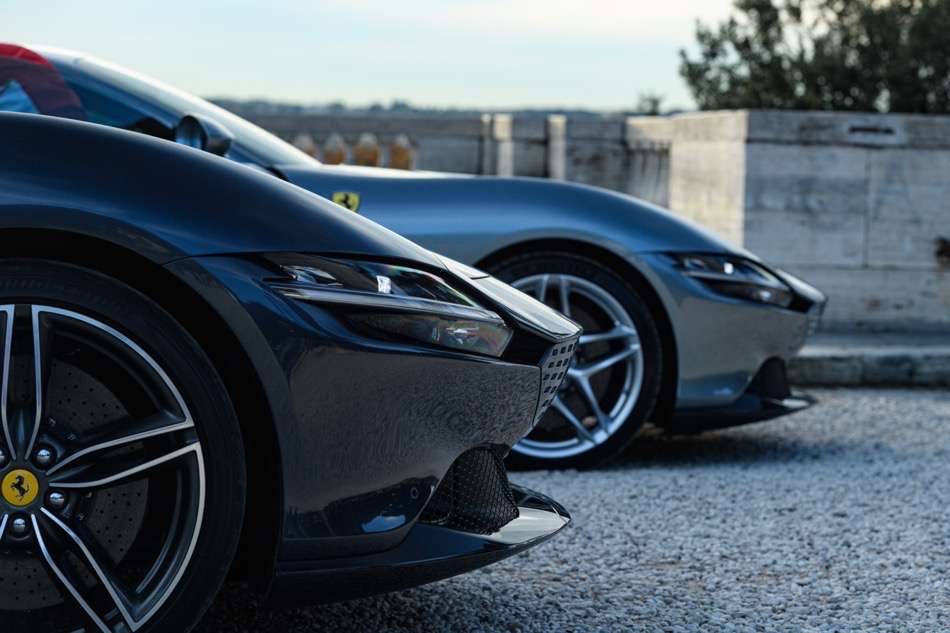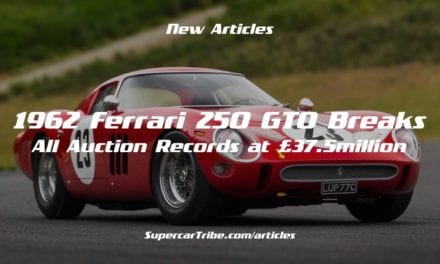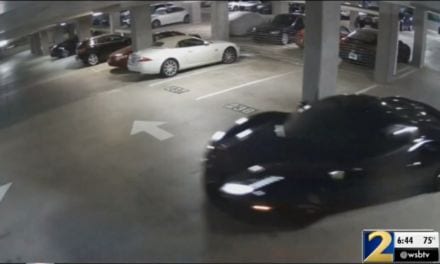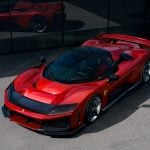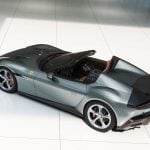The Ferrari Roma was launched on 13th November 2019 in the city from which it took its name, Rome Italy. This car followed in the success of the Ferrari Portofino and the California T that came before, both of which had folding roofs. But Ferrari launched the Roma as a fixed-roof coupe.
This is an entry-level model but it is neither slow nor cheap. The Roma has a turbocharged V8 engine, which sits behind the front wheels making it a front mid-engined car. This will of course mean handling is not compromised.
Another area where there is no compromise is the 8-speed transmission. Compare that to the original Portofino and you find the Roma has one extra gear. More impressive is the fact that the eight-speed transmission is also shared with the superior Ferrari SF90 Stradale.
Internally the Ferrari Roma is known as the Type F169 and has the potential to become one of the greatest road Ferraris of the modern era. So what makes the Roma so amazing? Let’s have a look.
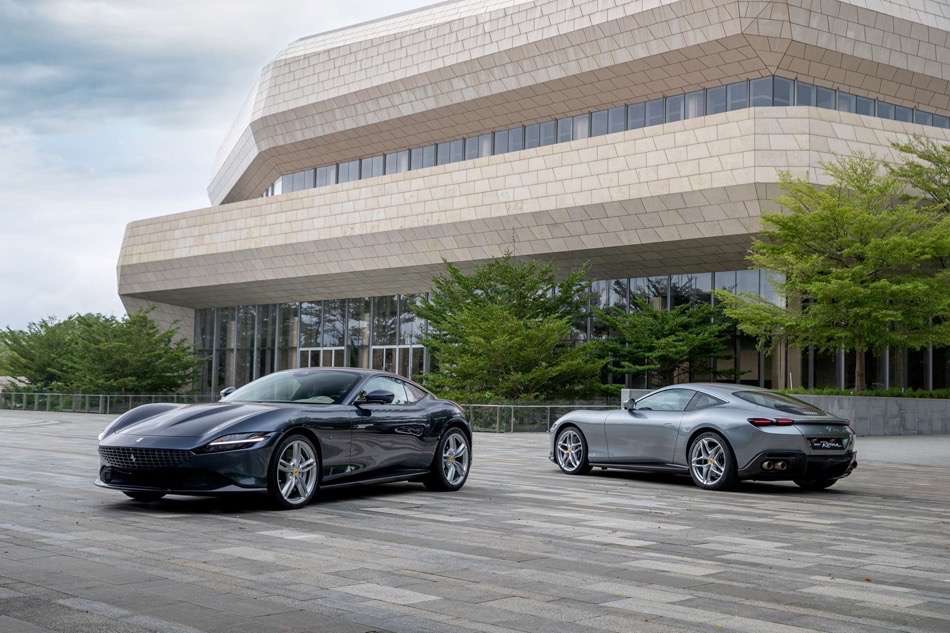
Ferrari Roma: Key Details
| Ferrari Roma (Type F169) | Detail |
| Launched: | 13th Nov 2019 |
| Engine: | 3.9L twin-turbocharged 90° V8 engine made by Ferrari – Type F154BH |
| Transmission: | 8 Speed Magna 8DCL900 dual-clutch |
| Power: | 456 kW (620 cv) at 5750 – 7500 rpm |
| Torque: | 760 Nm at 3000 – 5750 rpm |
| Top Speed: | 199 mph / 320 km/h |
| 0-62 mph (0-100 kmh): | 3.4 s |
| Replaces: | This is the spiritual successor to the Ferrari 250 GT Berlinetta Lusso from the early 60s. More recently there has not been a direct comparison, so it does not have an immediate predecessor. |
| Fiorano Lap time: | Not disclosed by Ferrari. The Ferrari California T manages in 1:29.80 which is just behind the Ferrari F40! This car will be faster. |
| Did you know: | You know Ferrari have a good line up when their entry model has a V8 engine! Many thought this would be a soft model. Far from it! |
Ferrari Roma: Ultimate Review
Ferrari Roma: Price
First, let us have a look at the price. One might expect to pay a huge premium for the privilege of owning this stunning Ferrari, but in Ferrari terms, you don’t. How much is the Ferrari Roma?
The base price of the Ferrari Roma is $220,630 in the US, £170,984 in the UK and €200,000 in Europe. All prices are plus local taxes. Typically Ferraris are ordered with a large number of extras, and so the options cost usually add at least 15% to the base price.
$220k might sound like a lot for a car but in the Ferrari line-up, it places it at the bottom of their price range. What this means though is for the price, you get a lot of Ferrari for the money.
It shares this spot with the similarly priced Ferrari Portofino M which is technically very similar but not as cutting edge as the Ferrari Roma. However, the Portofino does benefit from a folding roof, while the Roma is a fixed-roof coupe.
Score: 8/10 – It’s still expensive even if it is the cheapest Ferrari
Ferrari Roma: Performance
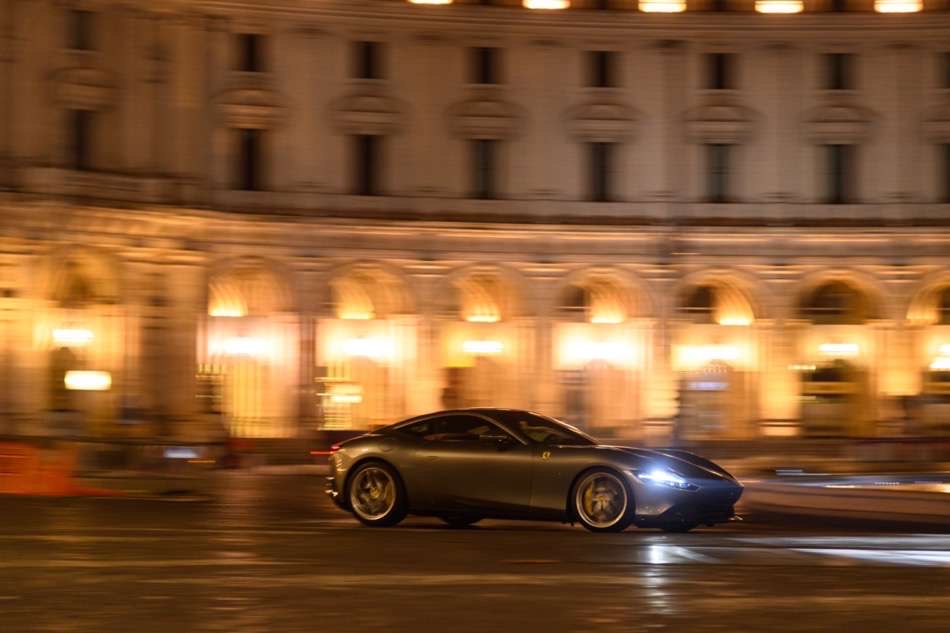
The Ferrari Roma is a car that is designed to be everyday-usable, so you might think the performance will be respectable but not excessive. This however is not the case, as the Roma is quicker than many Ferraris that have just ceased production!
The main measure of acceleration is of course 0-100 km/h, and that comes up in just 3.4 seconds. Now you would be right in thinking that is quick, but to give the perspective that’s as quick as a Ferrari 458 Italia, the last of the naturally aspirated V8 Ferraris.
More impressive is the 0-200 km/h time which is only 9.3 seconds. Again that’s less time it takes the average car to achieve half that speed.
The Top Speed is 199 mph or just over 340 km/h too. It wasn’t too long ago that we were trying to get to 200 mph with the Ferrari F40. The Roma is a car you can also use every day.
Score: 9/10 – Outstanding for a car that can be used every day
Ferrari Roma: Engine
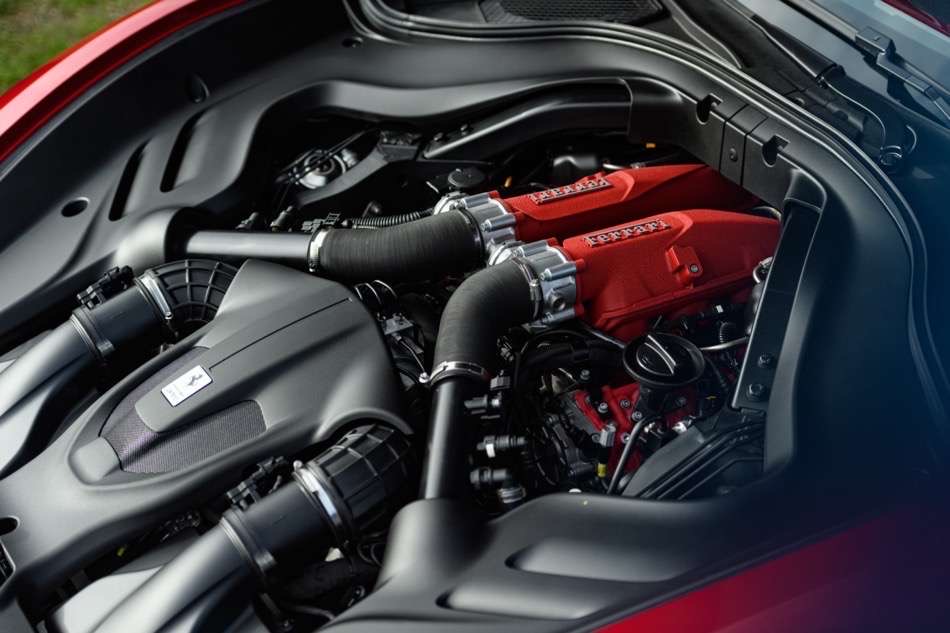
The engine block is the trusty Type F154BH V8 engine that Ferrari first introduced in 2013. The engine is used in both Ferrari and Maserati models and is the first V8 turbocharged engines that Ferrari have used on the road since the mighty F40.
Versions of the engine have been used on the following cars:
- Ferrari California T
- Ferrari 488 GTB
- Ferrari 488 Spider
- Ferrari GTC4Lusso T
- Ferrari 488 Pista
- Ferrari 488 Pista Spider
- Ferrari Portofino
- Ferrari F8 Tributo
- Ferrari F8 Spider
- Ferrari SF90 Stradale
- Ferrari SF90 Spider
- Ferrari Roma
- Ferrari Portofino M
There are differences in Displacement bore and power between these cars using the F154 engine block.
In the old days, Ferrari tended to have one engine for each model type. Today the basic elements of this same engine are being used across no less than six existing models.
The Roma’s engine is twin-turbocharged and is a direct-injected 90° V8 petrol engine fitted at the front of the car. However, since the wheels are behind the front axle, the car is technically front-mid engined which gives better weight distribution.
Score: 10/10 – It’s a proven engine and cannot be faulted
Ferrari Roma: Transmission
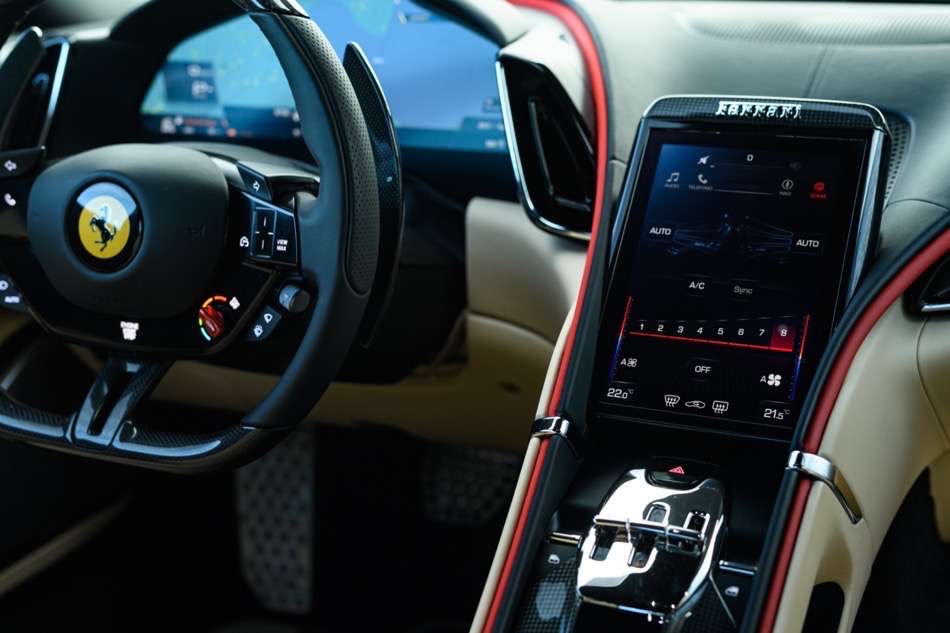
The Ferrari Roma is fitted with a Magna 8DCL900 dual-clutch transmission. Magna (previously known as Getrag) is the world’s largest supplier of automotive transmissions. They also supply gearboxes to BMW, Mini, Rolls Royce, Daimler AG, Porsche, VW group to name just a few.
This Magna 8DCL900 transmission is fitted to the following Ferraris:
- Ferrari SF90 Stradale
- Ferrari SF90 Spider
- Ferrari Roma
- Ferrari Portofino M
Compared to the original Portofino’s gearbox, the 8-speed gearbox is 6kg lighter and more compact in size. The extra gear helps to reduce fuel consumption as well as improving the drive with faster and smoother gear changes. This not only benefits at higher speeds but also around town in stop/start mode.
The gearbox is fitted at the rear of the car to give better weight distribution.
Score: 10/10 – Good enough for the SF90. More than good enough for the Ferrari Roma.
Ferrari Roma: Exterior Styling
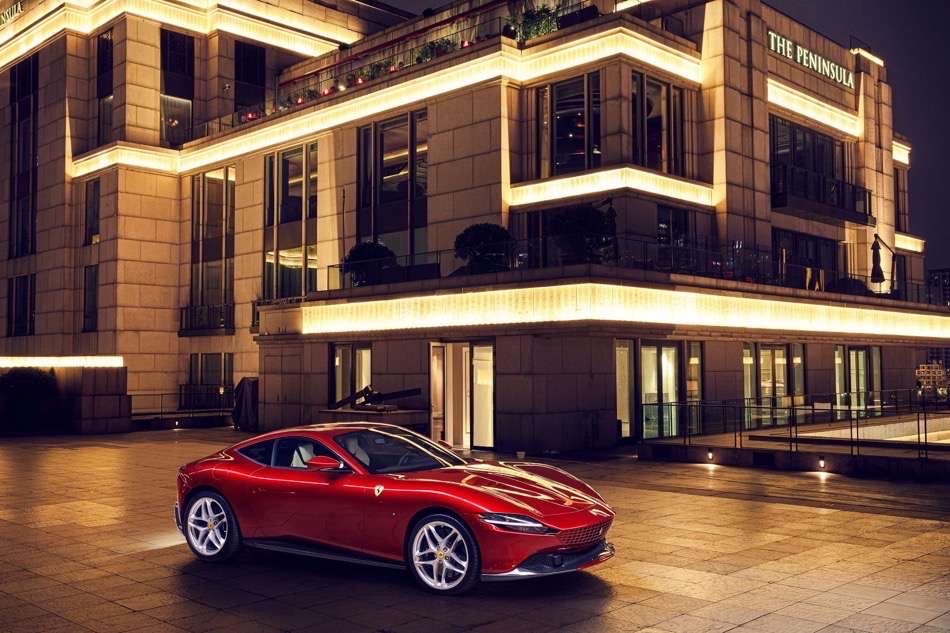
When the first images of the Ferrari Roma were released the immediate comparison was made with the newly released Aston Martin Vantage. Both share a very similar brief of being front-engined coupes with power sent to the rear wheels. The overall profile is similar, and many including Top Gear’s Chris Harris commented that Ferrari had designed an Aston Martin.
Personally, I don’t buy that argument, and it is always the case that new Ferraris are always criticised at launch. This includes me and only later is the design truly appreciated by all.
Take the Ferrari 550 Maranello as an example, which was criticised as being indistinguishable from the Toyota Supra at launch. It’s now considered to be beautiful and timeless, unlike the Supra.
The exterior design of the Ferrari Roma harks back to the cars designed in the ’60s. Long sweeping bonnet, angular design, and curves in all the right places.

But the car it most reminds me of is the Ferrari 250 GT Berlinetta Lusso from the 1960s. The side window profile is very similar, particularly at the rear. The Roma is the spiritual and modern successor, albeit with a twin-turbo V8 instead of V12.
The car has very clean and elegant lines, and rather than mimic the shape of the Aston Martin it creates its own. It cleverly hides the rear passenger space and practical boot,
At the front, the key design feature is the front grill. The shark-like angle is unmissable and gives the car its character. The good thing is the car looks stunning because of it and is available in three options; Colour coded, Chrome inserts, and Gloss Black.
I think this is really clever because Ferrari knows that customers like to individualise their cars, and the different grills will give that personalised look.
You might think that with such a sharp front end this is a very angular car. Far from it. The Ferrari Roma is beautiful, and deliberately so.
The design brief was to design a GT car that not only could be used daily but was worthy of the name Roma. Rome is a beautiful city with amazing architecture, so the car needed to compliment the name. It does.
The curves start with the front arches and work all their way to the rear. Even the hood has a bulge to give the engine a bit more space. The front lights look stylish but its the rear lights that look ultra-modern. They look like jewels and add to that luxurious element.
Score: 10/10: Ferrari has nailed the design of the car. A modern Lusso
Ferrari Roma: Interior Design
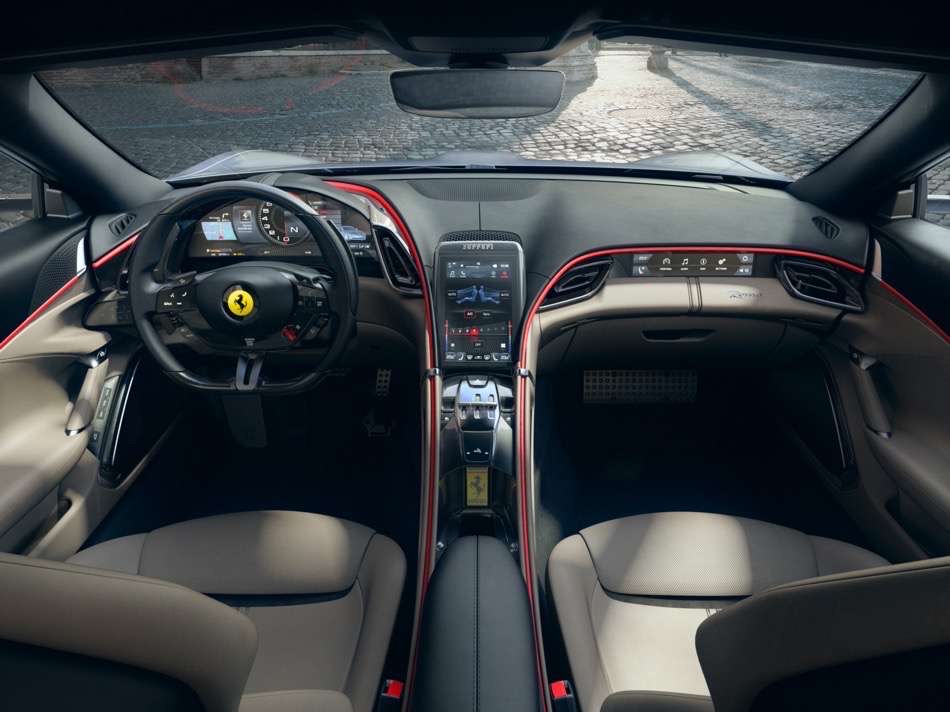
Step inside the Ferrari Roma and the first thing you notice is this is unlike any Ferrari that has come before. For a number of reasons too.
Firstly the driver and passenger zones have been split into two individual cells. This dual-cockpit is similar to what we find in the Ferrari Monza SP2, but this is more natural.
Previously Ferrari provided the passenger with an optional display, whereas now they also want the passenger to experience their own cabin. Note the passenger display is still optional though!
This all started with the redesign of the Ferrari HMI (Human Machine Interface). The HMI is the way the driver interacts with the cars displays and in the modern age, this is now fully digitalised.
This all follows from one principle that Ferrari now has adopted. “Eyes on the road, hands on the wheel”.
Sit in the driver’s seat and the display in front is fully electric. Nothing new you might say, but this time even the tachometer is also electric. The 16” display gives the driver all the information they will need and nothing more. Eyes on the road.
Ferrari has previously resisted the urge to go fully digital to try and retain some of the old school feel. But times are moving forward, and perhaps they have seen the benefits of a digital tachometer through Lamborghini’s usage.
The new style of the steering wheel is another example of tech in the cabin. The number of buttons over the years had increased to the point where it seemed half of the car was controlled from the wheel. Interesting concept but unsightly in reality.
But now the steering wheel buttons have been changed to digital soft-touch haptic buttons. If haptic sounds familiar its because its the vibrating feedback your iPhone gives when you press the screen. The steering wheel in the Ferrari Roma has this too.
This all means that the driver can control all of the cars main functions without hands ever having to leave the steering wheel. I can’t think of another car that achieves that and emphasises that this is a drivers car first and foremost.
The Manettino switch remains, but it too has been digitized. But what is now missing is the Stop/Start button. This is no longer needed as the key is now digitized. More on that later.
The passenger zone gets its own optional touch screen display too, giving much more than basic information. The display for most cars will be enough as the main screen but is only a subset of what the driver sees. It all adds to the drama.
The interior of the Ferrari Roma also reminds me of the interior of the Bugatti Divo, due to the separated driver and passenger zones. However, the Bugatti Divo also has a driver seat colour and a passenger seat colour. I would love to see that on the Ferrari Roma!
Score: 10/10 – The interior moulds around you, regardless of which seat you are sitting in.
Ferrari Roma: Technology
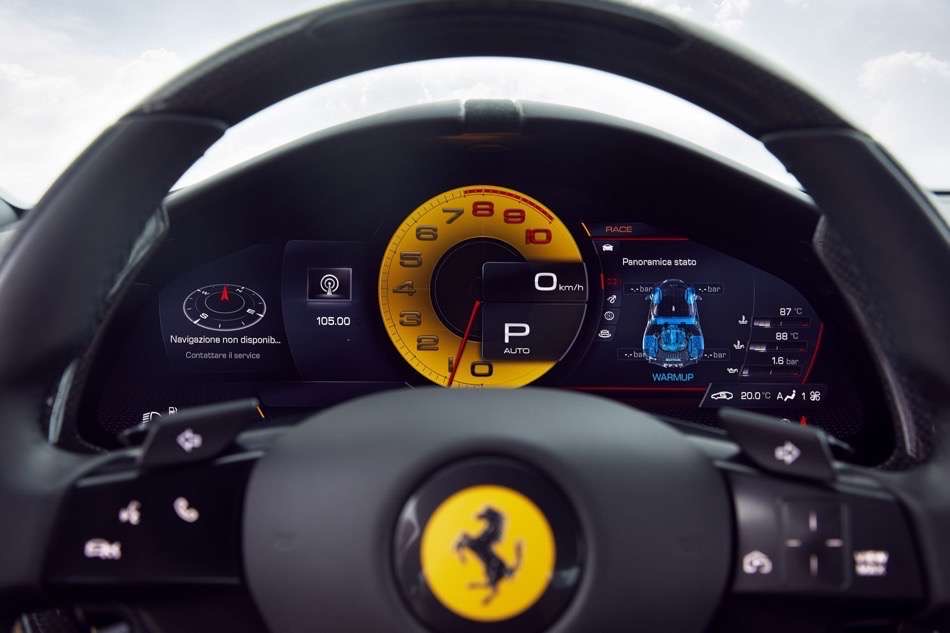
Let’s start with the key, which I don’t usually get excited about but this is by far the coolest key of any car. It is your very own Ferrari badge which is also the key. Instead of turning a key or pressing a start button, the digital key has a storage pod in the central console. Simply place your key there and you are all set to go.
Even getting in the car is easier. As long as you have the key with you, a simple press of a button by the handle will unlock the car. This new feature is known as Comfort Access.
I will say the interior of the Ferrari Roma reminds me of the interior of a McLaren (any model – they all look the same!). But this is not a bad thing! Largely this is because the Ferrari now has an 8.4” vertical display in the central console, and it makes a nice change in the usual Ferrari design architecture.
It still looks uniquely Ferrari and is not a design copy, but rather is a design feature. The designers have made a functional piece of technology look interesting, unlike in a McLaren where it only looks purposeful.
The headlights are the latest Matrix LED technology which not only looks good but works really well too. The overall look is important and is the reason why Ferrari have integrated the rear spoiler in the rear screen. It will only be seen at high speed.
The Roma is fitted with Stop/Start functionality as standard, pretty much essential for car emissions nowadays. Ferrari seems to have dropped the silly HELE name (High Emotions Low Emissions), as this is now part of the standard build.
The vehicle dynamics are seriously enhanced with Slide Slip Control 6.0 which improves driver safety and enjoyment considerably. For more details see the Handling section below.
If the owner chooses to add ADAS to the options list (Advance Driver Assistance Systems) they will also get adaptive cruise control. Some might argue that Ferrari is catching up, but I would say that Ferrari has made a car that is usable and not compromised in any way.
Here are some of the other Technology options that are available on the Ferrari Roma:
| Ferrari Roma Technology Options | What it does | Our Recommendation |
| Front Radar with ACC | Set the speed you want to travel at and the car will adapt to the traffic conditions. It also has the ability to recognise pedestrians and brake as a precaution. If it senses a front impact, braking pressure is increased. | Useful if you do not opt for the ADAS package |
| Back Radar | Useful for alerting the driver of any surrounding cars in the blind spot. Also when in reverse it will also inform the driver of any passing traffic. | Useful if you do not opt for the ADAS package |
| ADAS pack | Combines both the front and the rear Radar packages, and external mirrors and camera into one system. | Essential |
| Magneride dual-mode suspension system | The ride of the Ferrari Roma is further improved giving greater sportiness or comfort depending on how the driver is driving and the road conditions. This is over and above the existing capabilities of the standard suspension. This extra includes various features which allow to further improve the driving feel by ensuring greater sportiness or comfort, depending on road conditions and driving style. |
Highly useful |
| Passenger Display | A display screen in front of the passenger giving key details such as speed etc. This is almost essential for the full experience. | Highly useful |
| Apple Carplay | All the usual Apple Carplay functionality in your car. Full functionality is via a USB cable, and allows calls, messages, music, navigation, with SIRI at your beck and call. | Essential |
| Premium Hi-fi system | If you like concert-quality music, the JBL Professional 1,500 W delivers this. It has 12 channels, 12 speakers, amplified sound with Quantum Logic Surround technology. | Highly useful |
| Smartphone wireless charger | Charge your smartphone by placing it down on a built-in wireless charger. Requires compatible devices with built-in magnets (most latest models have this). | Essential |
| Garage door openers | If you have a garage or entrance gate this will allow you to open/close at the touch of a button. | May be useful for you |
| Thermo-insulating windscreen | The heat-insulating windscreen reduces the transmission of light entering into the car, therefore reducing the temperature. In the long term, it also decreases the heat damage to the dashboard and steering. Essential if you live in a hot climate. | May be useful for you |
| SVR system | Automatically connects the car to Operations Centres and the Police if your car is towed, moved, has the battery disconnected, or tampered with without consent. | May be useful for you |
Score: 7/10 – Some of the things you would consider to be essential are chargeable.
Ferrari Roma: Practicality
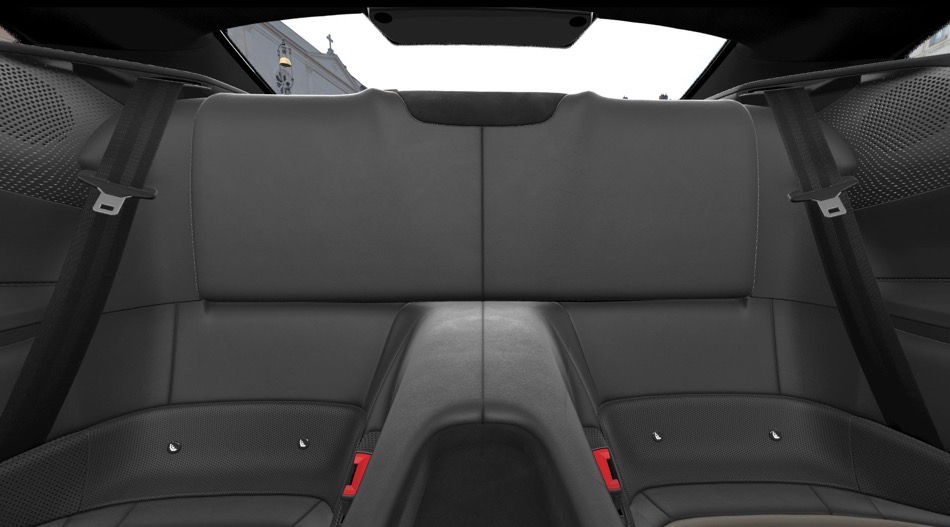
There are two things you notice when sitting inside the Ferrari Roma. Firstly it is unlike any GT car Ferrari have ever designed, Secondly, it is roomier than the Ferrari Portofino M on which it is based. The likely reason for this is the additional space is the gain from the fixed roof, as opposed to a folding roof.
But do not be fooled, because Ferrari market the Roma as a 2+ car. 2+ means it has more than two seats but is not a proper four-seater. For proper extra seats, you will need to buy a Ferrari GTC4 Lusso or the 2022 Ferrari SUV.
I would describe these rear seats as child seats or occasional seats. Adults will be fine for small journeys but will need a medal if they can manage a lengthy trip.
Over the years I have had many Porsche 911s, but we decided to move on when the kids turned to teens. They needed extra legroom, and moving front seats forward to give it to them was not feasible on longer journeys. The Ferrari Roma will be much the same.
The rest of the cabin is very practical, places to stow things away, a place to put your phone, and Bluetooth to allow you to make calls etc.
Fuel capacity is pretty decent too, and the car has an 80L fuel tank. This means that the Ferrari Roma has a driving range of over 450 km (279 miles) and up to 825 km (512 miles). Below are the official fuel consumption and the CO2 Emissions data for the Ferrari Roma.
Ferrari Roma Fuel Consumption & CO2 Emissions:
| Fuel consumption | CO2 Emissions |
| LOW: 17,8 L/100 KM | LOW: 404 G/KM |
| MID: 10,8 L/100 KM | MID: 246 G/KM |
| HIGH: 9,7 L/100 KM | HIGH: 220 G/KM |
| EXTRA HIGH: 10,3 L/100 KM | EXTRA HIGH: 235 G/KM |
| COMBINED: 11,2 L/100 KM | COMBINED: 255 G/KM |
Boot capacity is pretty decent too with 272 litres seats up or 345 litres seats down. That’s actually very usable on a day to day basis. Talking of boot space, check out the luggage options available from Ferrari. The list is quite impressive.
Ferrari Roma Luggage Options:
| Ferrari Roma Luggage | Luggage Details |
| Trolley | The key element of the collection, both in terms of use and design and technology, is the Trolley.The minimalist design is what makes this object beautiful from any angle: the smooth front, entirely made of leather, has a discreet horizontal cut in the upper part, suitable for quickly placing tablets, papers or other travel documents to always have them at hand; the rear part, on the other hand, stands out for its elegant metal slide, which can be extracted by means of a quick and practical release mechanism, patented by Ferrari. The Trolley can therefore be transported easily on any terrain, thanks to the wheels lined with soft rubber and equipped with very low resistance bearings. Inside, the space is large and regular, allowing you to better organize everything you need. The suitcase is also equipped with elastic straps for securing items and keeping them tidy during transport. The trolley is available in 5 leather colours: Vinaccia, Nero, Cuoio, Beige Tradizione and Rosso Ferrari. Below is the size in cm: • Height: 55, • Width: 41, • Depth: 20 |
| Duffel | The rounded and harmonious lines distinguish it from all the other items in the Collection, and its compact size makes it suitable for any type of use while offering excellent capacity. Inside there is a compartment separated by zipping, which is suitable for storing medium-sized objects, while in the other compartment there is a small closable pocket for even smaller or valuable objects. The Duffel Bag is available in 5 leather colours: Vinaccia, Nero, Cuoio, Beige Tradizione and Rosso Ferrari. Below is the size in cm: • Height: 29.5, • Width: 50, • Depth: 27.5 |
| Weekend suitcase | The weekend suitcase features a very particular symmetrical design. It is in fact the only item in the Collection to have a double external zip, one on each side; the beauty of the symmetry is enhanced by the upper double handle, which facilitates transport by increasing the hand support surface. The weekend suitcase also has a discreet external pocket to keep papers and documents at hand. The two zips give access to two separate compartments. This feature is very useful to divide the content of the suitcase. The weekend suitcase is available in 5 leather colours: Vinaccia, Nero, Cuoio, Beige Tradizione and Rosso Ferrari. Below is the size in cm: • Height: 39, • Width: 46, • Depth: 20.5 |
| Suitcase | The suitcase is the largest object in the Collection. On the exterior, the design is very similar to that of the Overnight suitcase, and inside the space has a single, spacious compartment. Available in Vinaccia, Nero, Cuoio, Beige Tradizione and Rosso Ferrari. |
| Overnight suitcase | The Overnight suitcase, as the name suggests, is the smallest object in the Collection. Compact and elegant, it is ideal for both daily business use and short trips. Available in Vinaccia, Nero, Cuoio, Beige Tradizione and Rosso Ferrari. |
| Suit holder | The garment bag is the only “soft,” item in the Collection. On the outside, the dominant material is a technical fabric in the colour Canapa, which lines both sides and ensures greater lightness and strength. On the upper part, there is instead a leather insert of your choice, from which the hanger comes out. The latter is entirely made of aluminium and has a retractable folding hook, optimizing the overall size once closed. The bag is also equipped with an elastic band for fastening the trousers to prevent them from falling off. The interior is decorated with a yellow lining which is the same in all the items in the collection, thus creating a strong element of liaison. The main part of the garment bag, made of technical fabric, is available only in the colour Canapa, while the inserts come in 5 leather colours: Vinaccia, Nero, Cuoio, Beige Tradizione and Rosso Ferrari. Below is the size in cm (when folded in half): • Height: 54, • Width: 57, • Depth: 5 |
| Packages | Luggage combination packages available |
| 2 x suit holder | |
| 1 x trolley + 1 x duffel | |
| 1 x trolley + 1 x weekend suitcase | |
| 1 x duffel + 1 x weekend suitcase | |
| 2 x trolley | |
| 2 x duffel | |
| 2 x 48h |
The only final part to note is that the rear ski hatch is available but only as an optional extra. Also, there is space for an umbrella in the boot, but the Ferrari Roma umbrella will be a chargeable extra!
Score: 7/10 – Good practical car, and only let down by the cramped rear.
Ferrari Roma: Handling & Braking
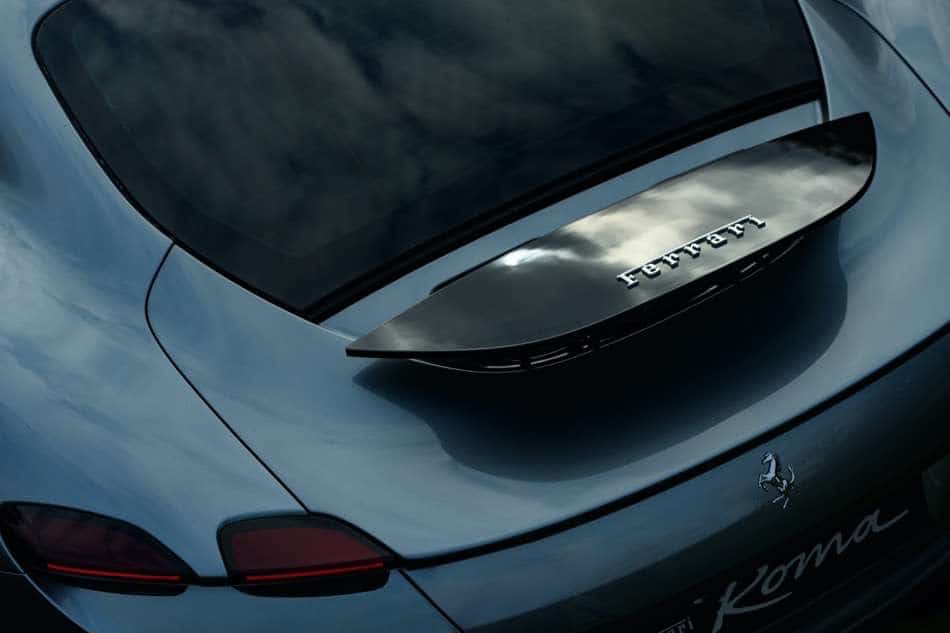
The technology in the car is working hard to not only keep you on the road but also make the experience more enjoyable. One such example is Slide Slip Control 6.0 which is Ferrari’s latest cutting edge vehicle dynamic system.
This is the first time this has been added to a Ferrari GT car and is driver-controlled with the latest version of the 5 settings Manettino switch. When coupled up with the Ferrari Dynamic Enhancer they magically adjust the brake pressure at the callipers to control the yaw angle. Clever stuff.
The car is also fitted with active aerodynamics such as the rear spoiler. This avoids unnecessary drag and also makes the car look cleaner at normal speeds by keeping it stowed away.
Another thing I found interesting is that the Ferrari Roma is available with four different tyre options. These are summarised in the table below.
Ferrari Roma Tyre Options
| Tyres | Details |
| Tyre Size – Front | 245/35 ZR20; 8J x 20” |
| Tyre Size – Rear | 285/35 ZR20; 10J x 20” |
| Pirelli | Standard |
| Bridgestone | Optional |
| Michelin | Optional |
| Michelin Run Flat | Optional |
Moving on to the brakes, standard equipment on the Ferrari Roma are carbon-ceramic. You will find 390 mm X 34 mm at the front, and 360 mm x 32 mm at the rear. These are the same brakes that are fitted to the Ferrari Portofino M.
Braking performance is already proven and this is a great choice for the Roma. The carbon-ceramic brakes also mean that they are fade-free in extreme braking conditions, and will last much longer than traditional brakes.
The suspension is a double-wishbone with coil springs, with anti-roll bars. As with all Ferraris nowadays the dampers are enhanced with MagneRide shock absorbers which adjust to the road conditions.
MagneRide uses magnetised fluid to allow them to be electromagnetically adjusted based on precise road conditions. This is developed and supplied by Delphi Automotive and is a well-tried and tested enhancement to the handling of the car.
In truth when it comes to handling, Ferrari has over 70 years of cornering know-how. They are the benchmark setters in their sectors, and this is no exception.
Score: 10/10 – Few manufacturers are consistently good at this, and for Ferrari, this is the one area they make no compromises.
Ferrari Roma: Maintenance & Warranty
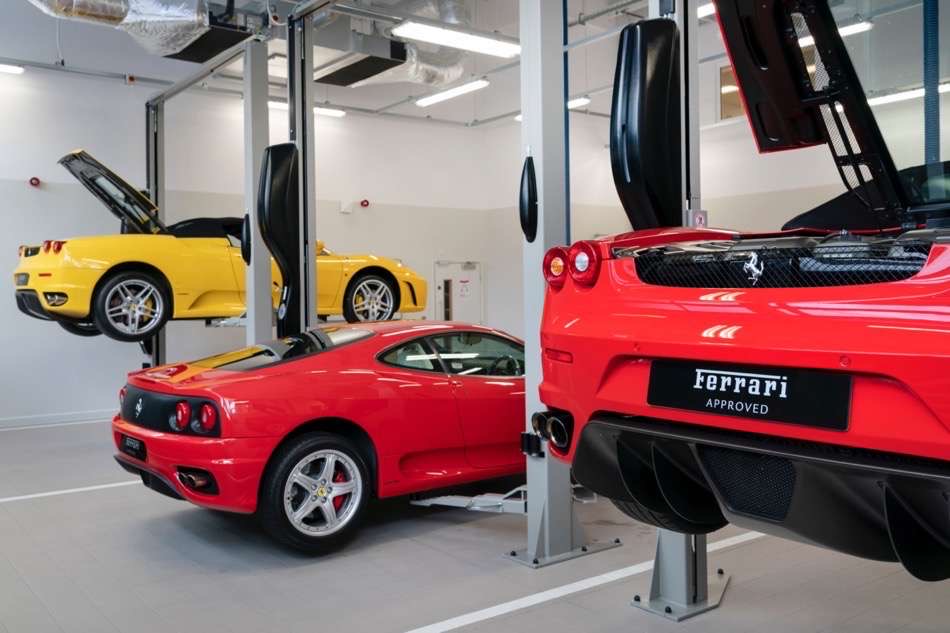
This is where Ferrari have exceeded what any other manufacturer offers. For maintenance Ferrari offers a worldwide seven-year maintenance-free package for all regular maintenance items in the car’s life.
All new Ferraris therefore can be driven with peace of mind that the next service bill will be on Ferrari. This also extends to the Ferrari warranty as well which covers items that fail over the 7 years as well.
So how often does a Ferrari Roma need to be serviced?
The maintenance schedule for the Ferrari Roma is every 20,000 km (12,400 miles), or every year with no mileage restrictions. This service must be carried out in the official Ferrari Service Centre and includes parts required for the service of the Roma.
Score: 10/10 – Buy a Ferrari and not have to worry about maintaining it. Dreams don’t get better!
Ferrari Roma: Heritage
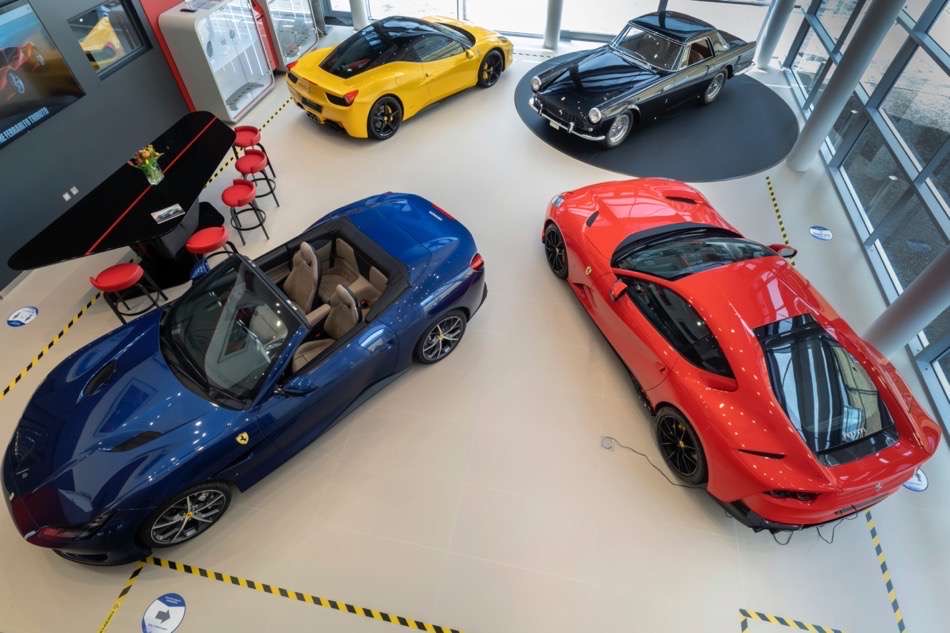
The heritage from which the Ferrari Roma was born could not be any stronger. Ferrari started in 1947 by the legendary Enzo Ferrari and have gone on to produce some of the most beautiful and sought after cars ever made.
The greatest hits list includes the Ferrari 250 GT Lusso on which this was based or the Ferrari F50 which was literally an F1 car clothed for the road. There is no manufacturer which had led the pack throughout its lifelike Ferrari, and today they make more profit per car than any other manufacturer.
They have done this by really understanding what the customer wants, delivered it, and then presented numerous upsell options that they also want to buy. As a result, no two Ferrari Romas will ever be ordered with the same specification, and no Ferrari is ever ordered with only a basic specification.
Score: 10/10 – Few car companies can come close to what Ferrari has achieved.
Ferrari Roma: Other Competition
Aston Martin DB11
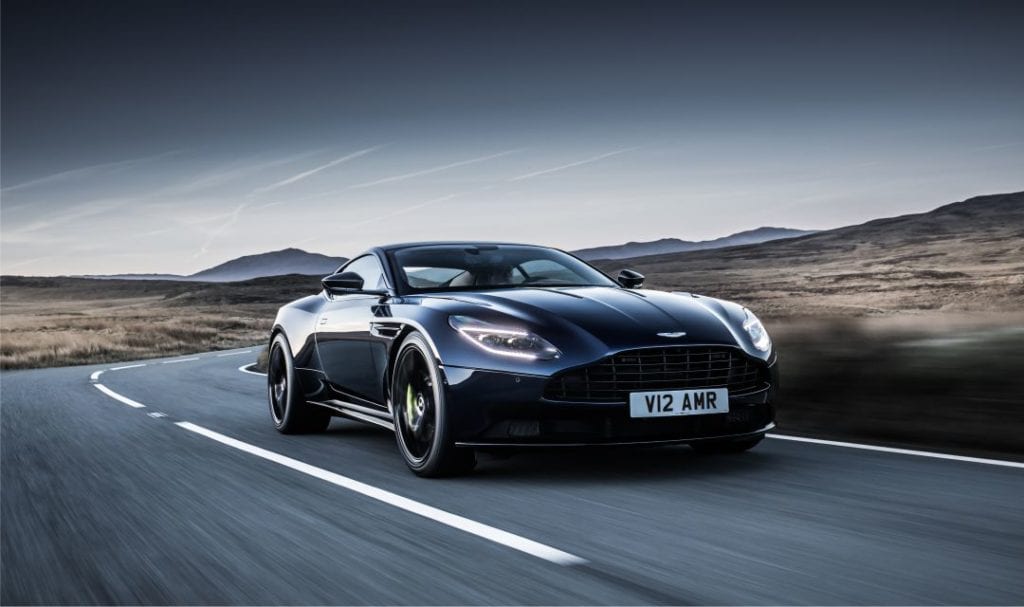
I have already mentioned how some likened the Ferrari Roma to an Aston Martin when first launched, and there are similarities. Cabin space and practicality are similar, particularly for rear-seat passengers.
But the DB11 is slower (0-100 km/h in 3.9 s), has a lower top speed (301 km/h / 187 mph), and is now approaching four years old. Price is less at only $206k ($15k less).
Porsche 911
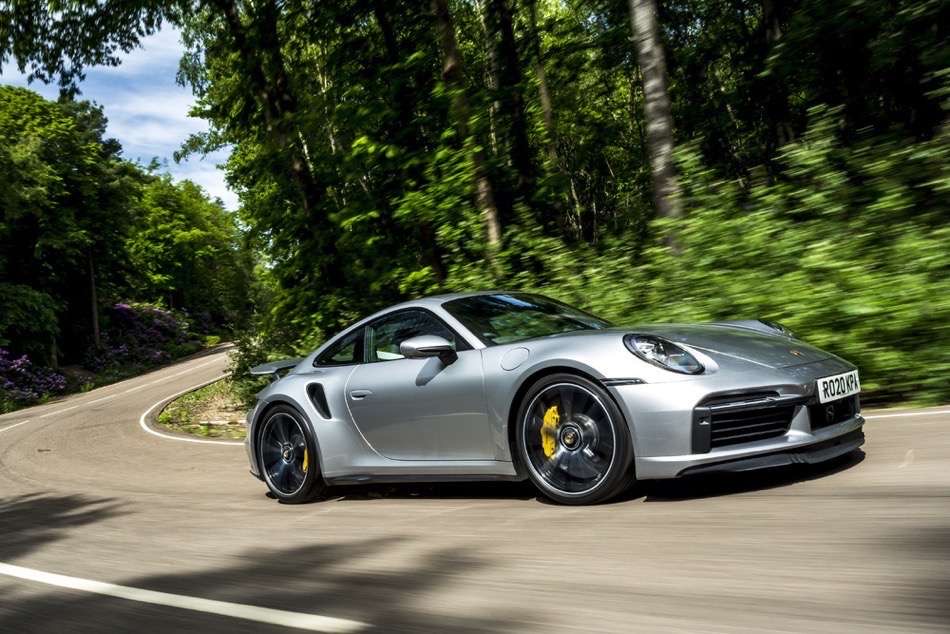
It’s hard to believe that the Porsche 911 shape has been around for nearly 60 years, and the car has evolved so much over time. The current base 911 only costs $99k, which is less than half the price of the Ferrari Roma.
However the 911 Turbo S Coupe is the most comparable, so we will compare that at $204k. Even at this price, it is still $16k less than the base Ferrari Roma.
Performance is staggering. It reaches 100 km/h (62mph) in just 2.7 seconds and hits the limit at an amazing 330 km/h (205 mph) which is 10 km/h more than the Ferrari.
You might wonder if this is where the money should go? It’s a good question, but the better car will be more than just a series of numbers. I suspect the Ferrari will win that out.
Bentley Continental GT Mulliner
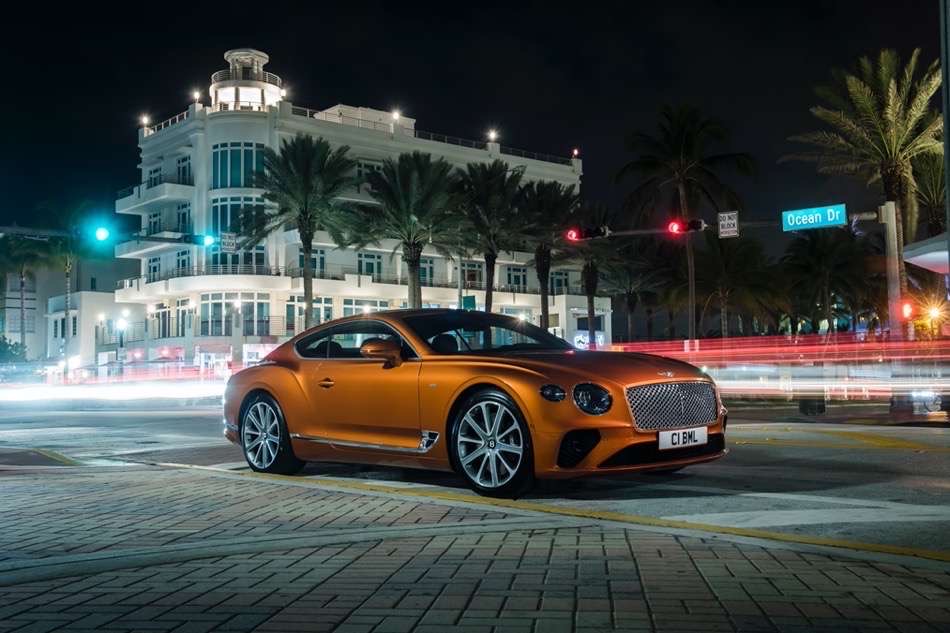
The Bentley would certainly beat Ferrari if it was down to luxury and practicality. Adults can fit in all four seats and comfortably cross continents if needed. Hence the name.
But the Bentley is slower in accelerating to 100 km/h (62 mph) in 4.0 seconds before maxing out at 198 mph or 318 km/h. But there is more hidden behind these numbers.
When comparing the weight of the cars the Bentley weighs in at 2,165 kg compared to the Ferrari Roma’s 1,570 kg. That means the Bentley is carrying 38% more weight when compared to the Ferrari. I know which one I would rather be driving.
Score: 7/10 – The Roma is good, but is the Porsche 911 Turbo S better? Exclusivity might be the deciding factor.
Ferrari Roma: Our Verdict
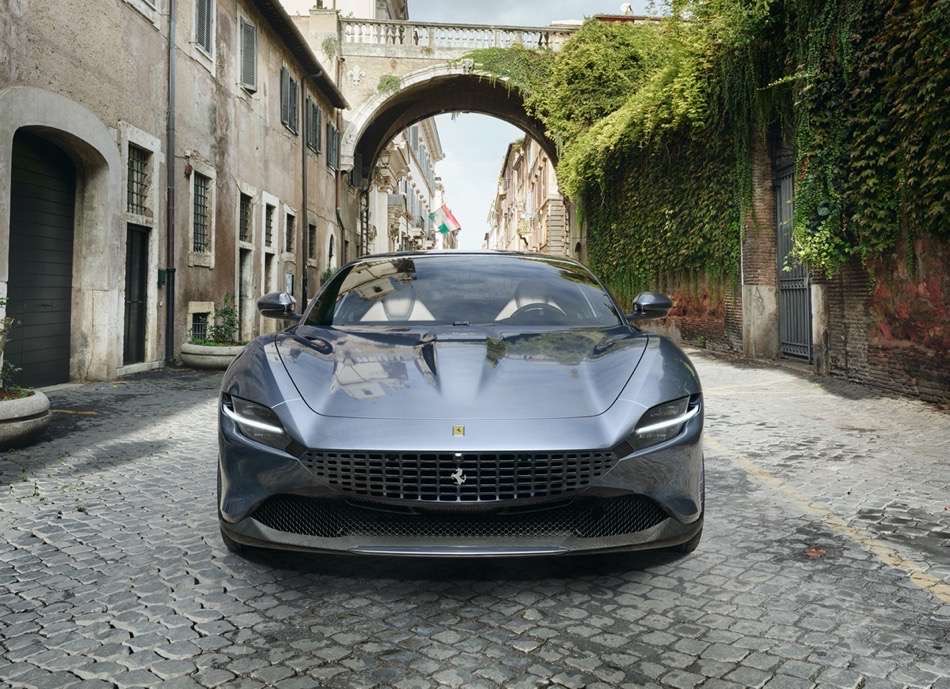
All Ferraris are special, and the Roma is perhaps the car that in theory has the most at stake. An unusual but elegant design. An interior that breaks away from the traditional mould.
This is also a car with stiff competition not just from outside the brand but within the brand too. Why would someone choose a Ferrari Roma over a Ferrari Portofino M, or even the F8 Tributo?
The one thing the Ferrari California was able to do was to bring new owners to the brand, such as females, or daily drivers. Even existing Ferrari owners realised that their garage had a Ferrari California sized space.
With the Roma, Ferrari is punching out a new hole in “their” type of customer and making the Portofino base wider. They currently sell around 8,400 cars per year and rather than sell more of the same they want to minimise downside risks through diversification. Having a wider offering and lots of different types of customers supports that gameplan.
The result is that the Ferrari Roma is a pure Ferrari and one that Enzo himself would have signed off on. It’s a perfect homage to their history and is modern in design and execution. It is no surprise that this car is sold out and the order books are full.
I estimate that production will make up around 25% of all Ferraris sold, which at current rates would make around 2100 cars made per year. Owners will be happy with the masterpiece that it is, and shareholders too with an extra half-a-billion dollars in revenue per year.
Outstanding job Ferrari.
Overall Score: 9/10 – There are so many areas where Ferrari have just nailed this car
| Category | Score | Possible | % |
| Price | 8 | 10 | 80% |
| Performance | 9 | 10 | 90% |
| Engine | 10 | 10 | 100% |
| Transmission | 10 | 10 | 100% |
| Exterior Styling | 10 | 10 | 100% |
| Interior Design | 10 | 10 | 100% |
| Technology | 7 | 10 | 70% |
| Practicality | 7 | 10 | 70% |
| Handling & Braking | 10 | 10 | 100% |
| Maintenance & Warranty | 10 | 10 | 100% |
| Heritage | 10 | 10 | 100% |
| Other Competition | 7 | 10 | 70% |
| Total Score | 108 | 120 | 90% |
Ferrari Roma: Configurator
Exterior Configurator & Colours
Ferrari Roma Solid Colours
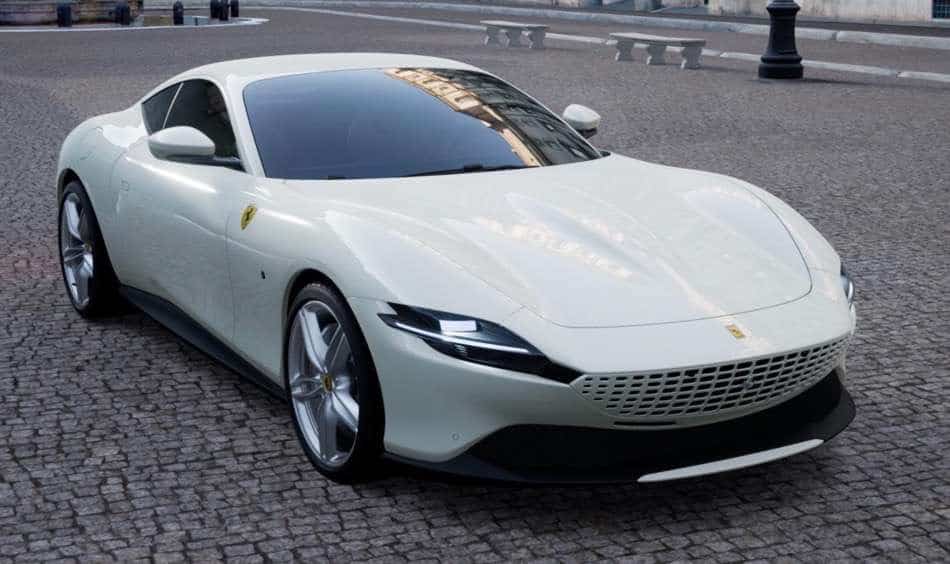
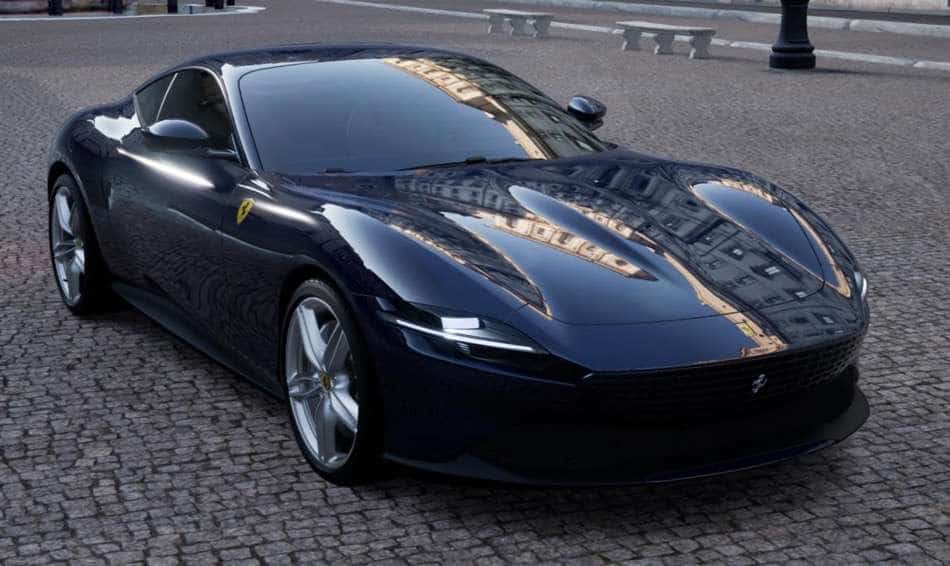
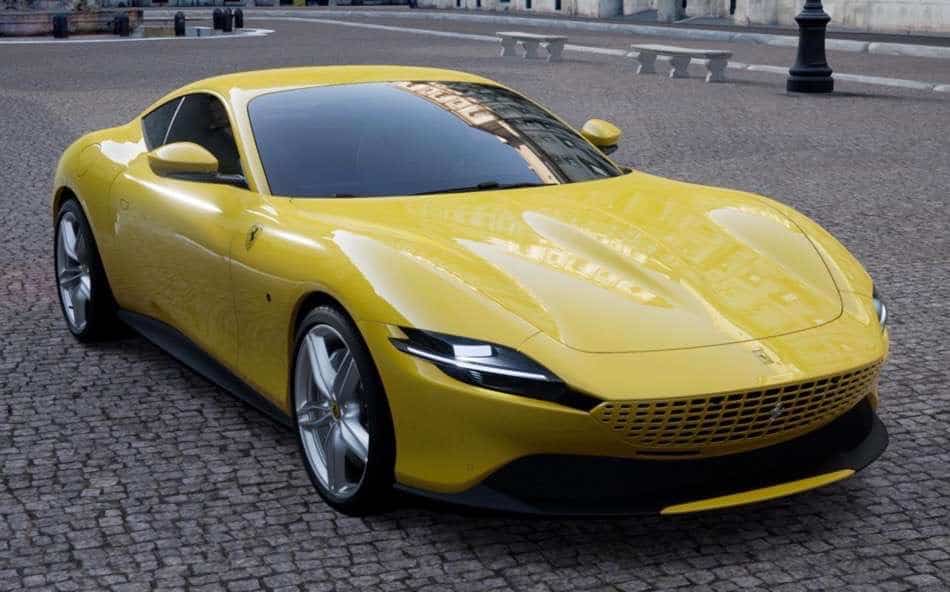
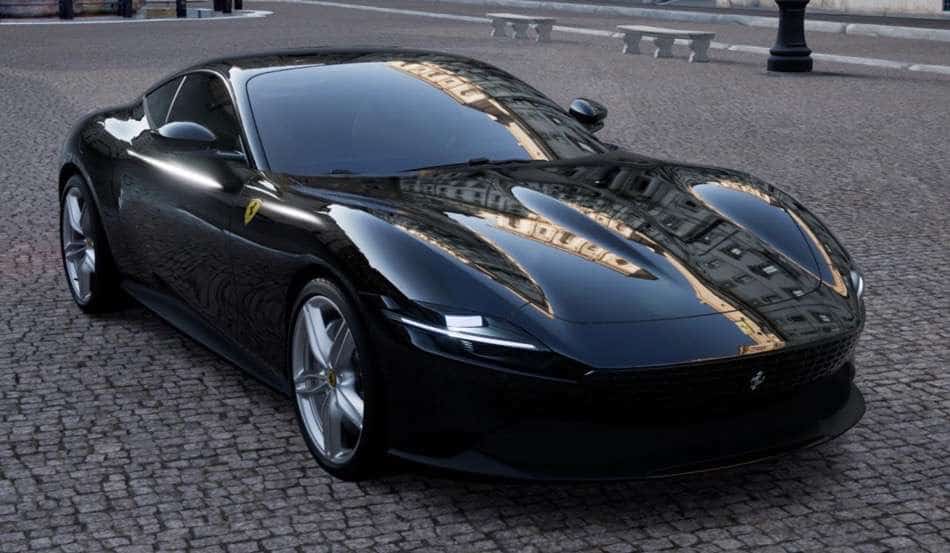
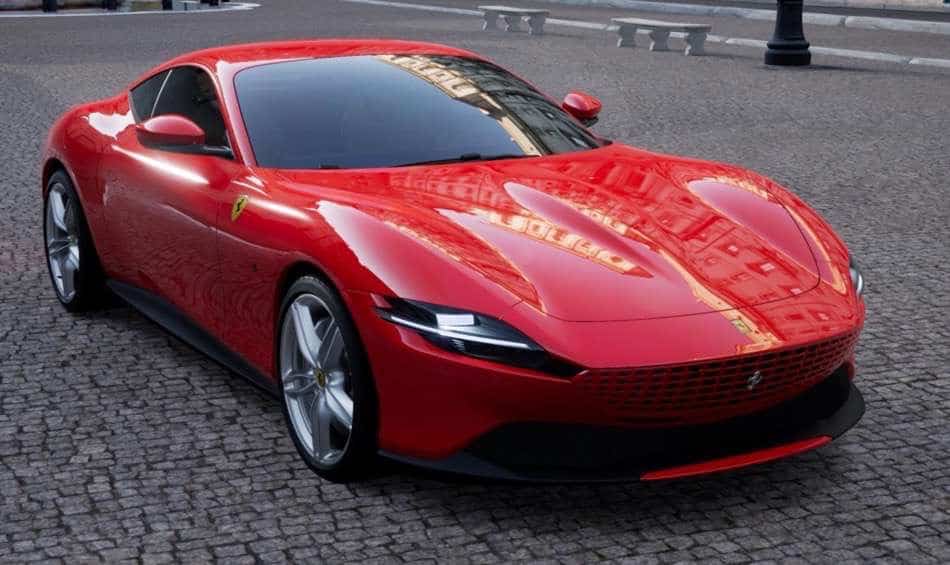
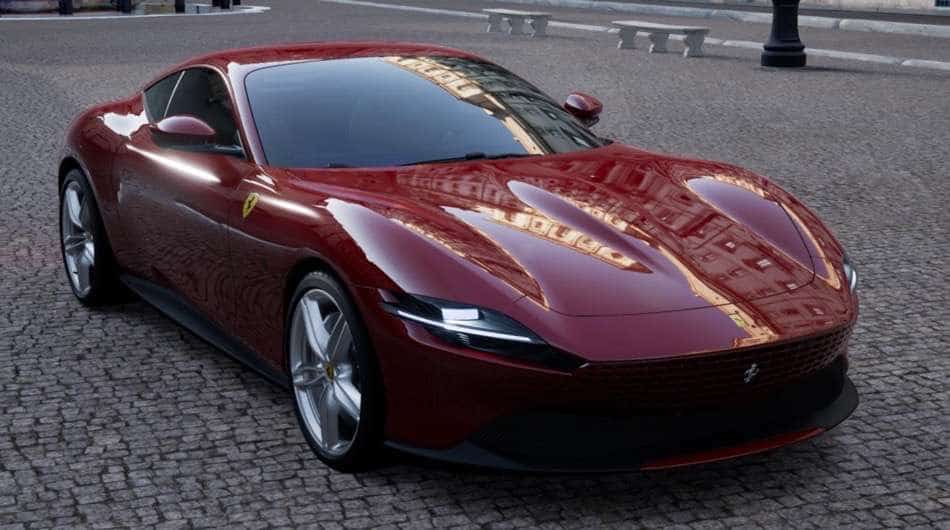
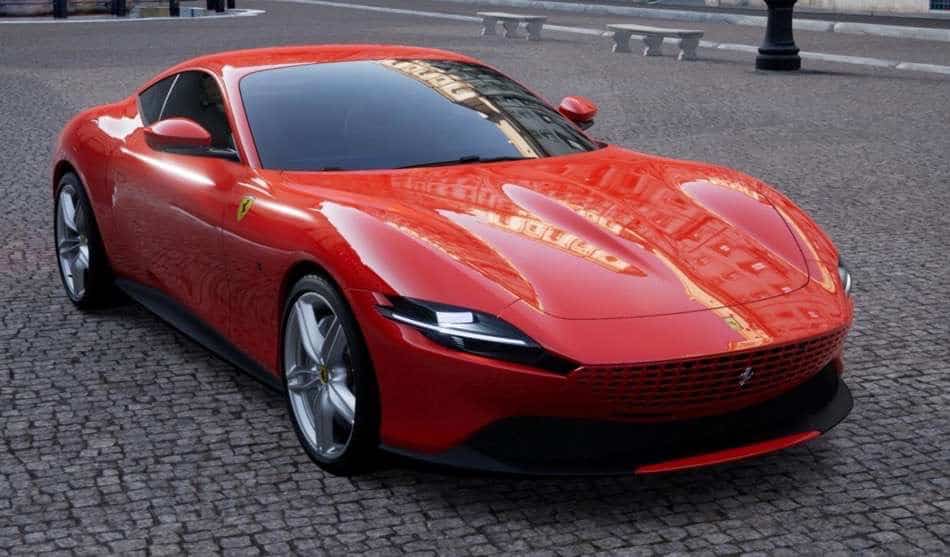
Ferrari Roma Metallic Colours
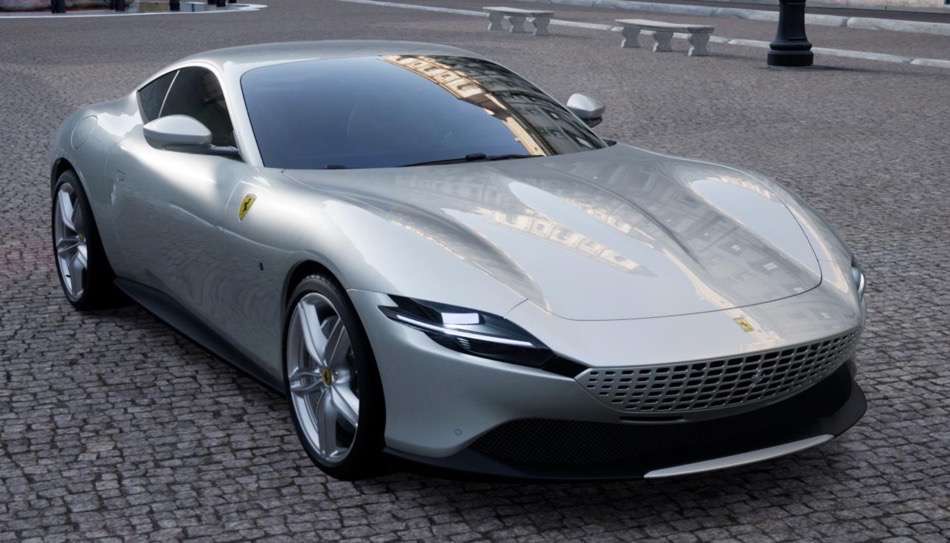
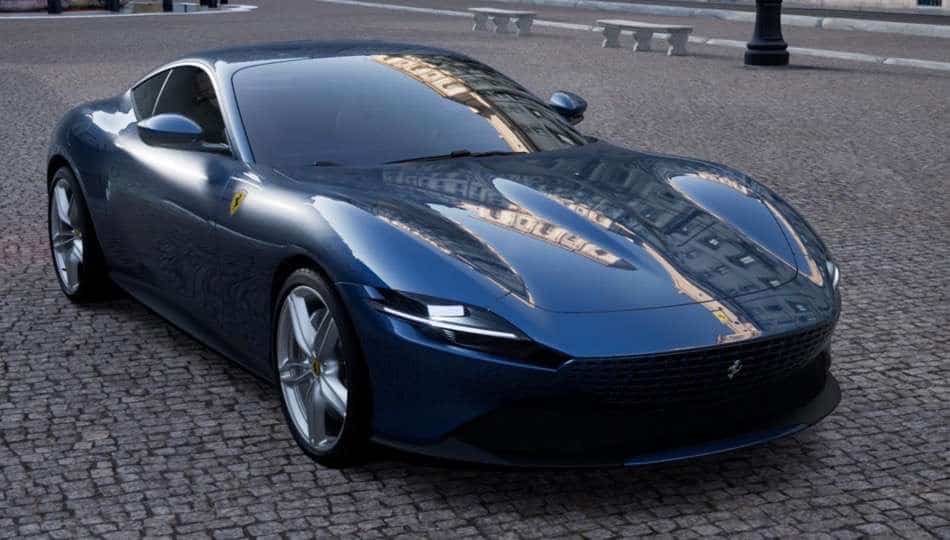
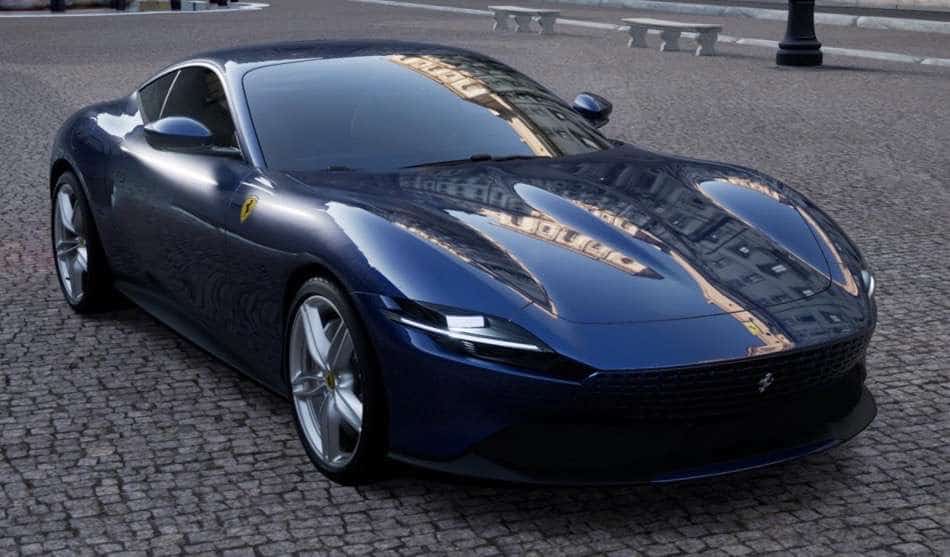
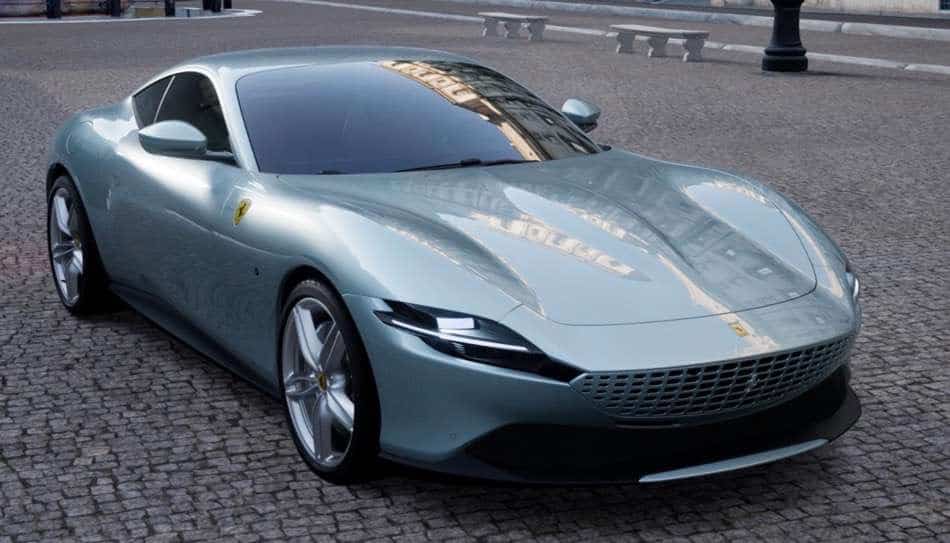
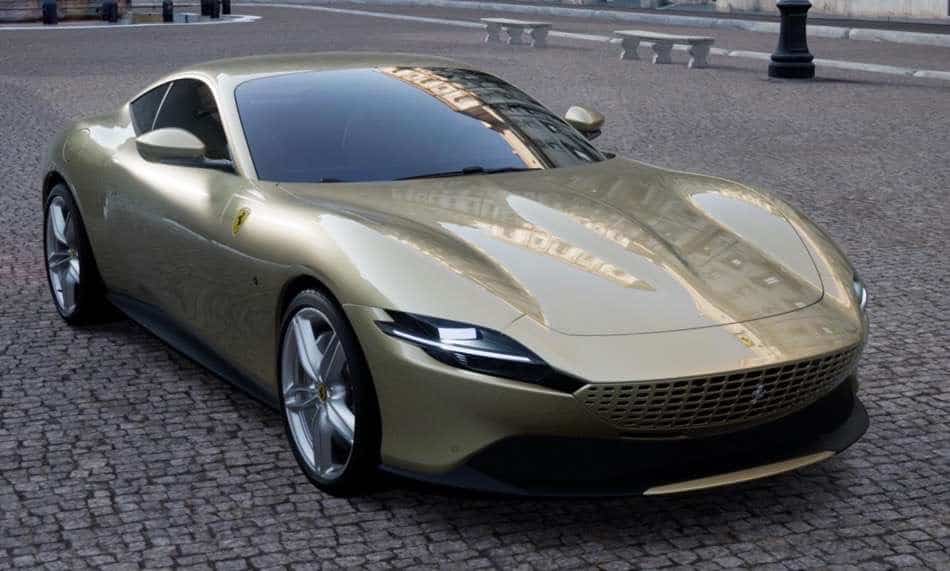
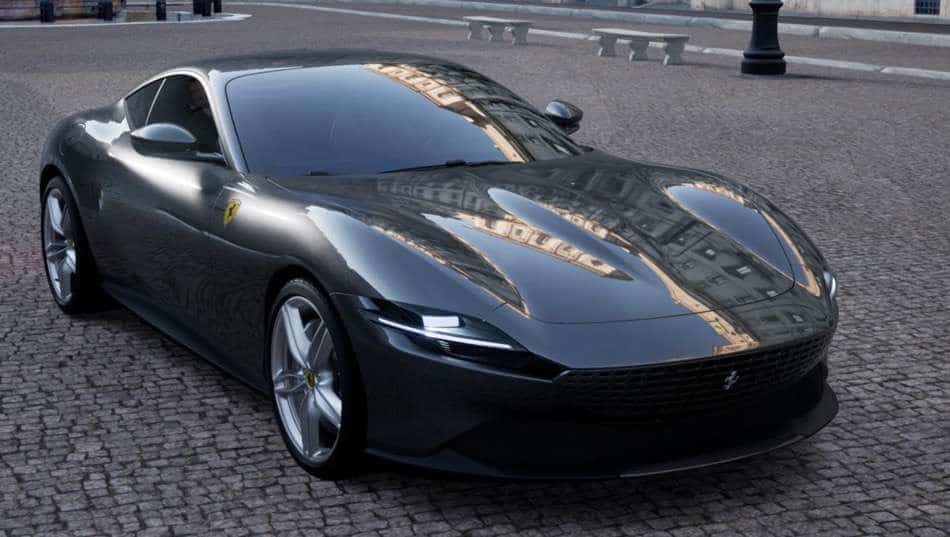
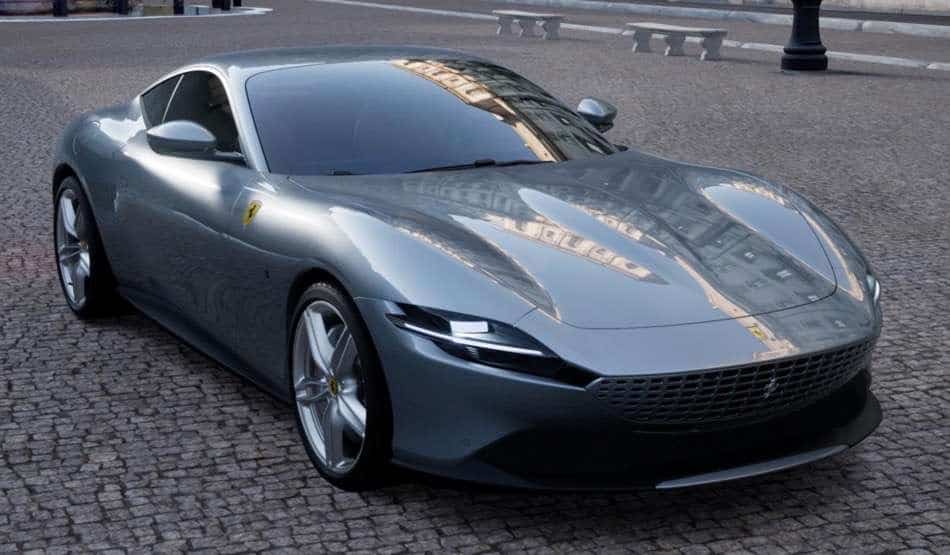
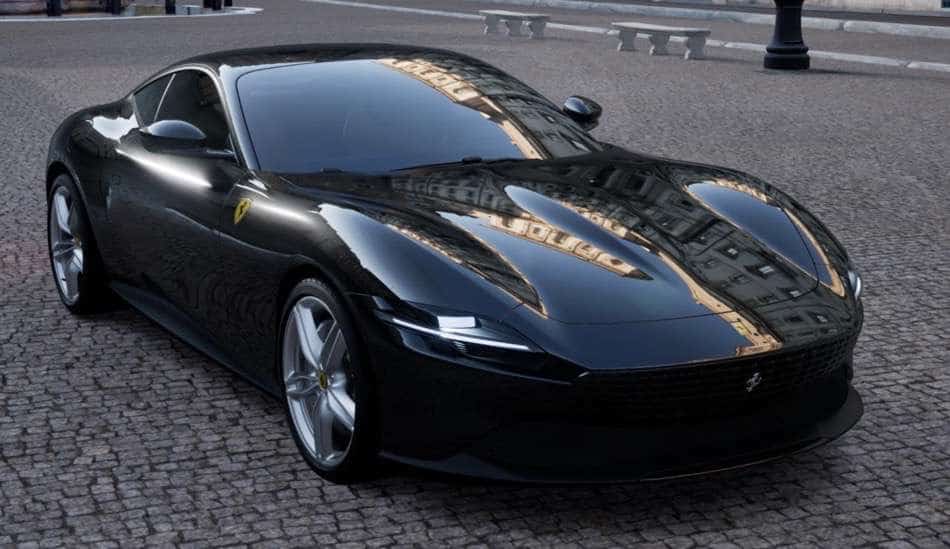
Ferrari Roma Historical Colours
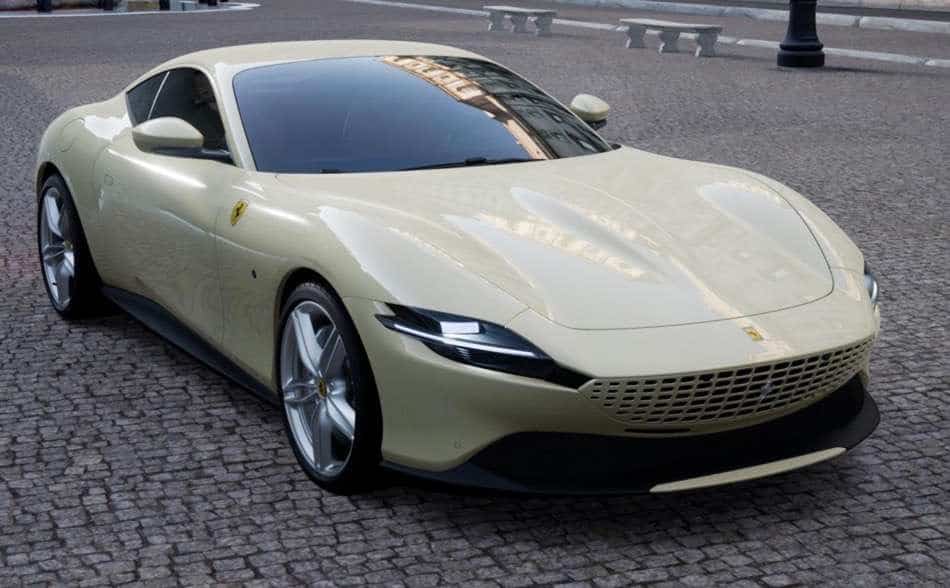
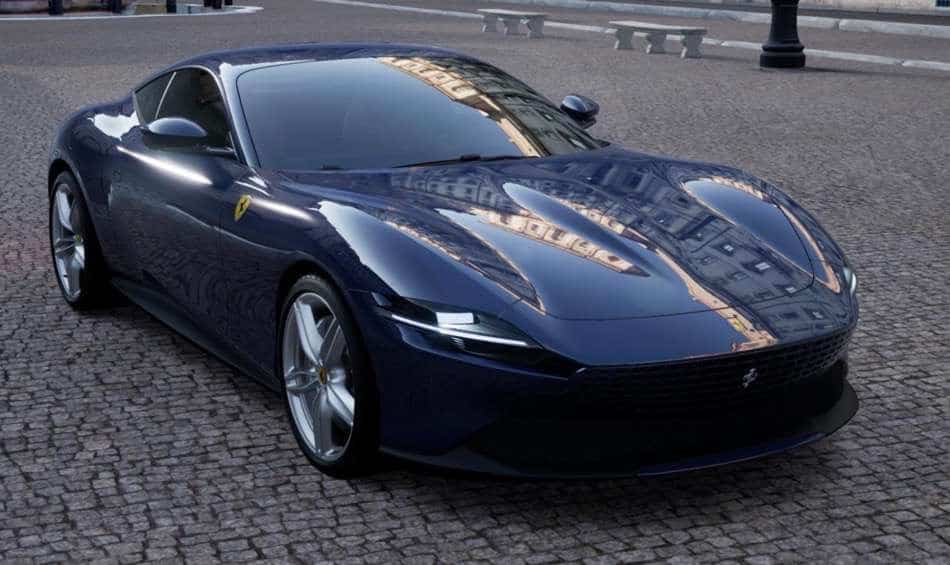
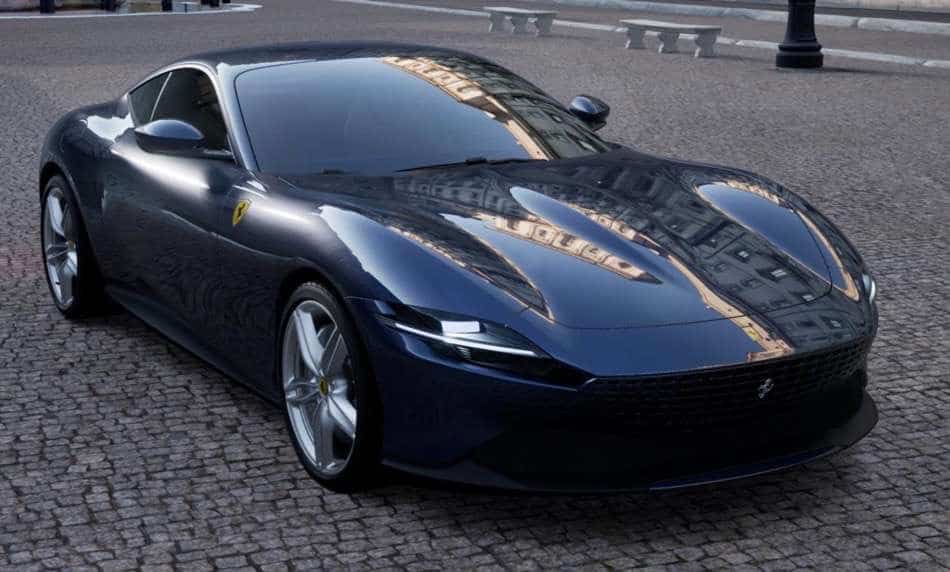
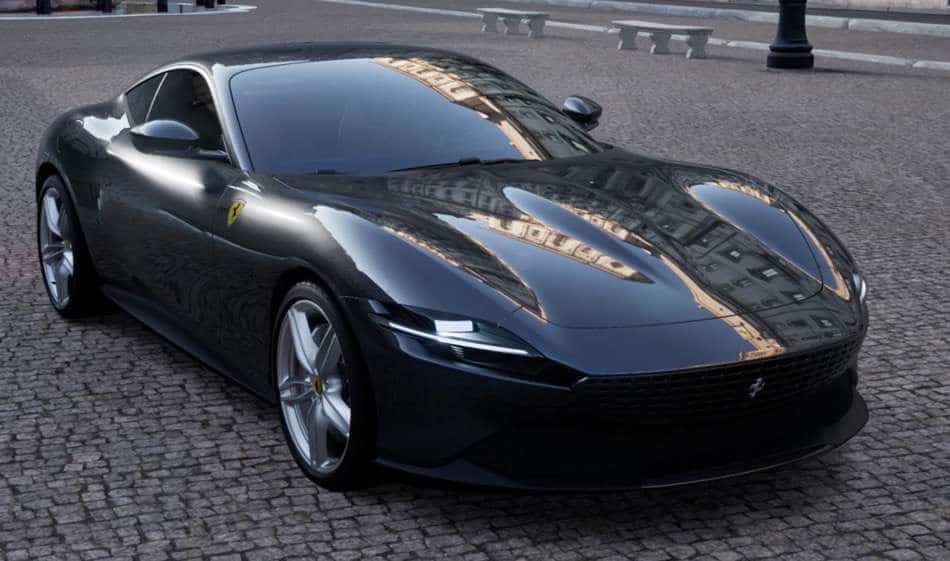
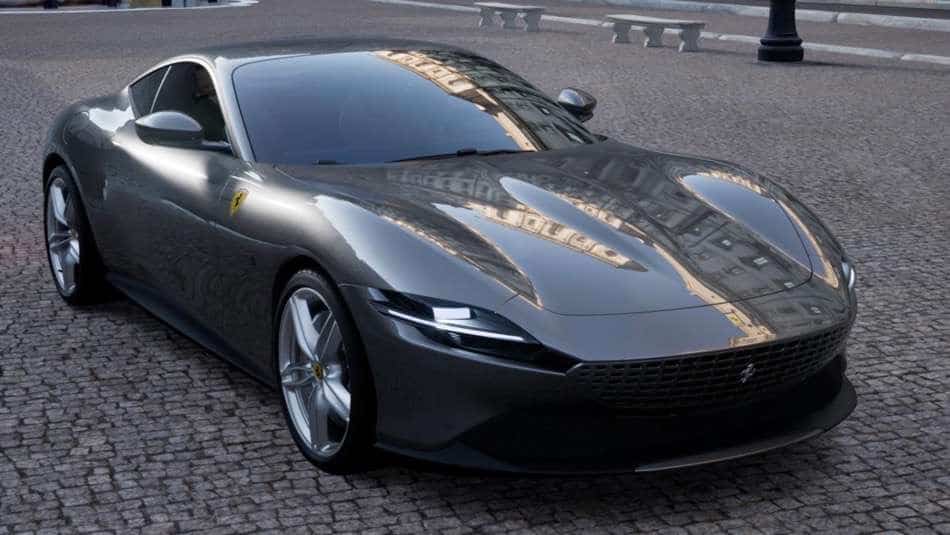
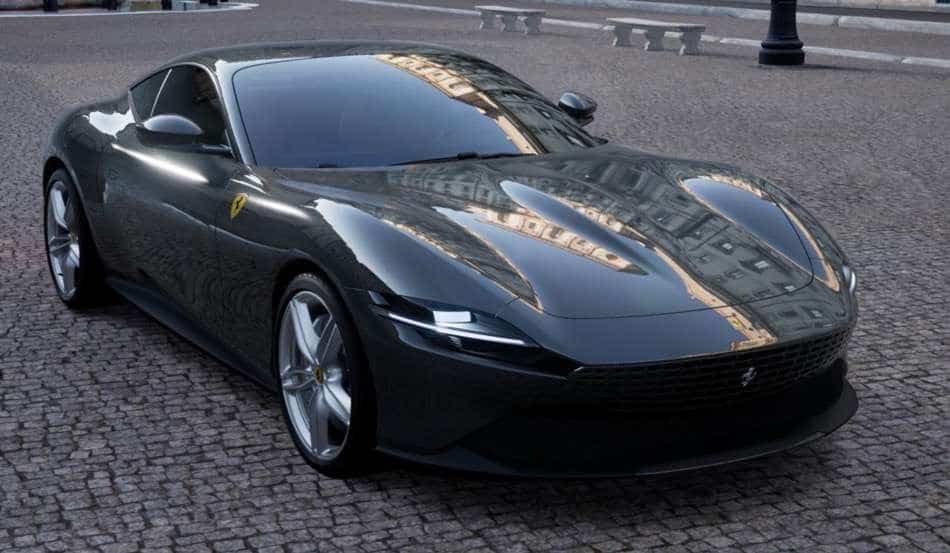
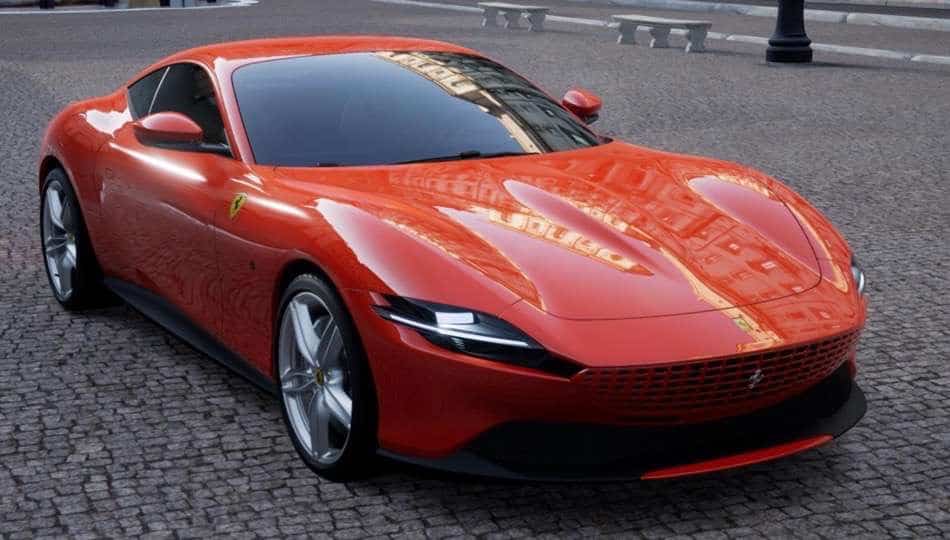
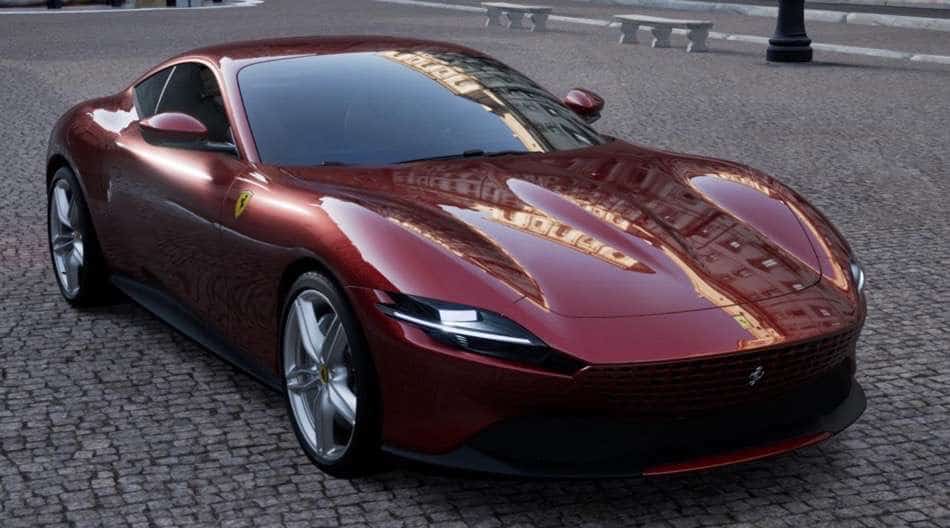
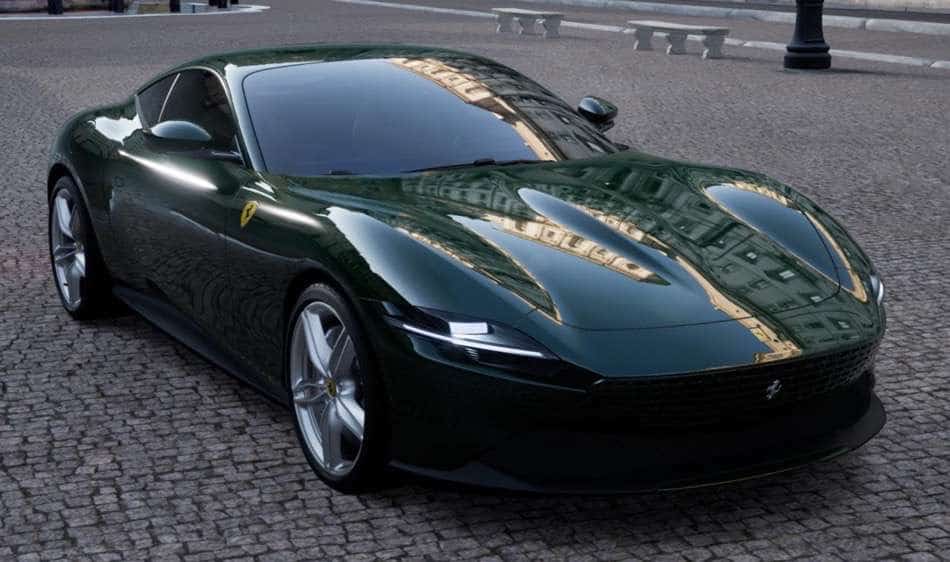
Ferrari Roma Special Colours
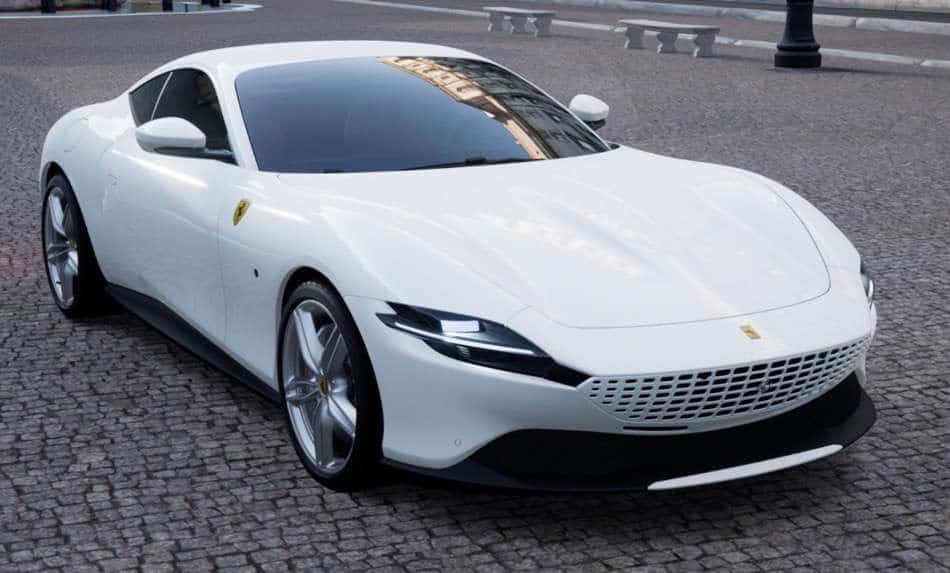
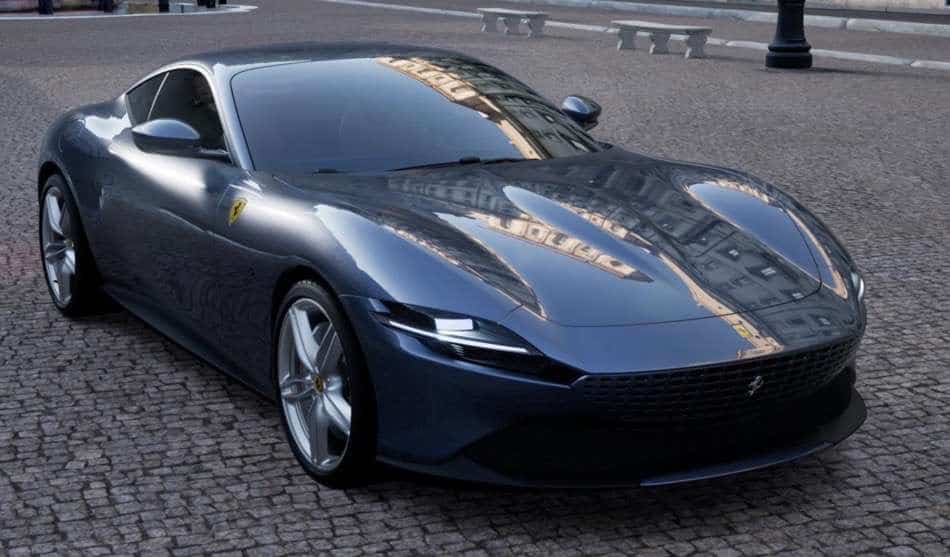
Interior Configurator & Options
Ferrari Roma Interior Standard Colours (Daytona Seats)
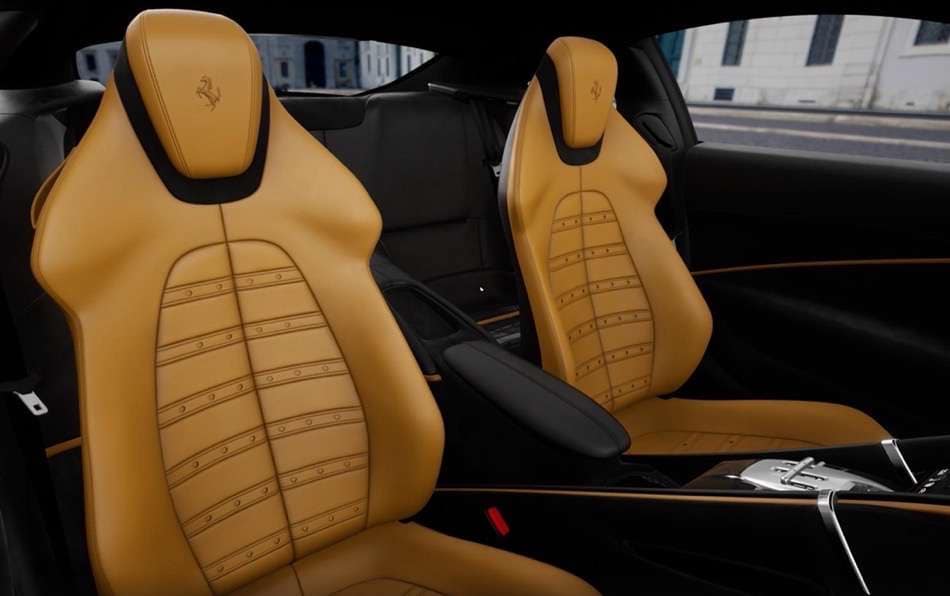
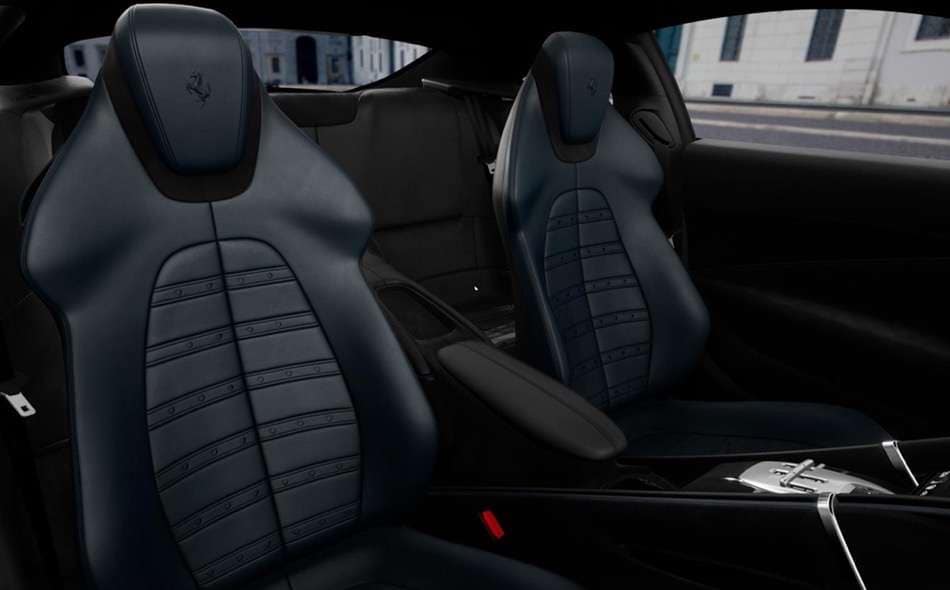
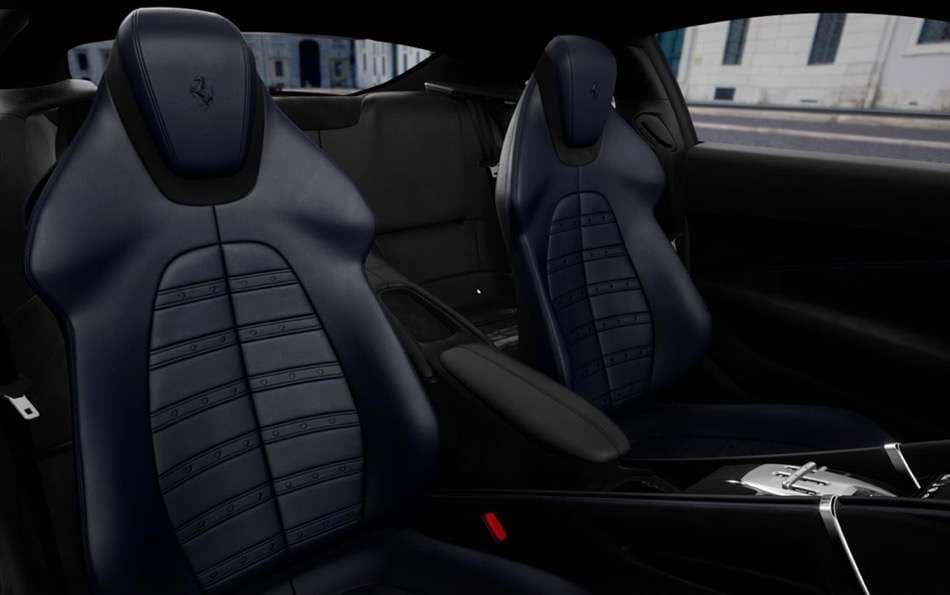
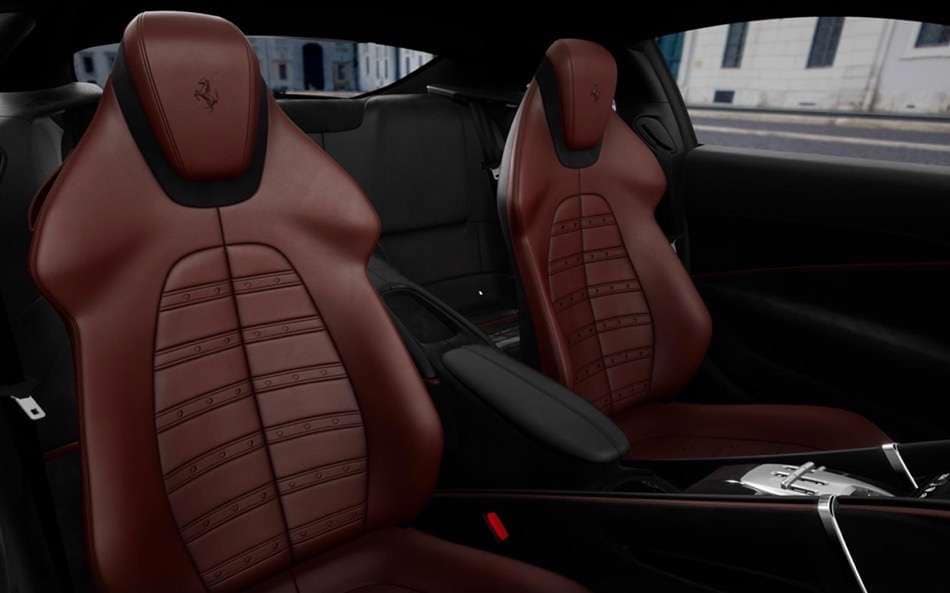
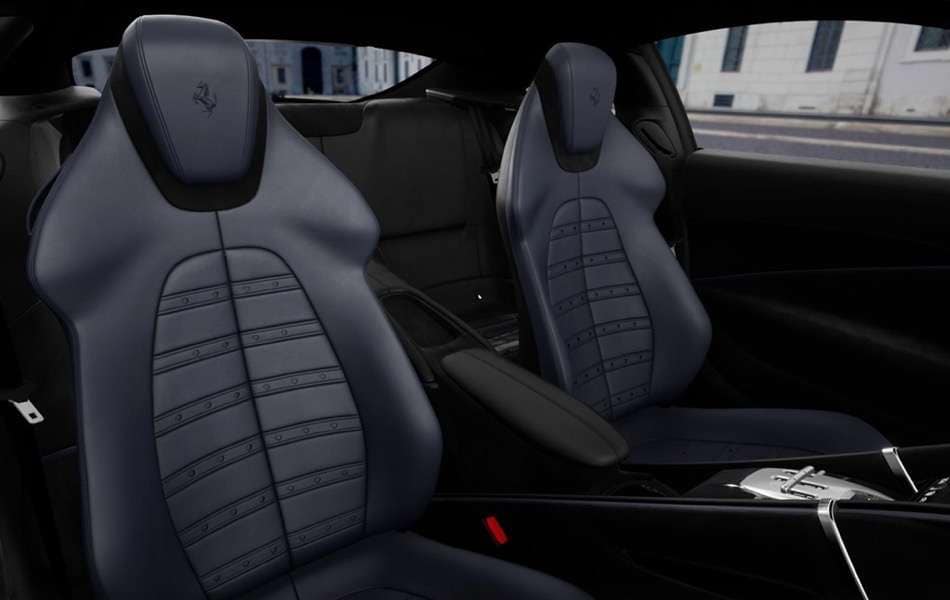
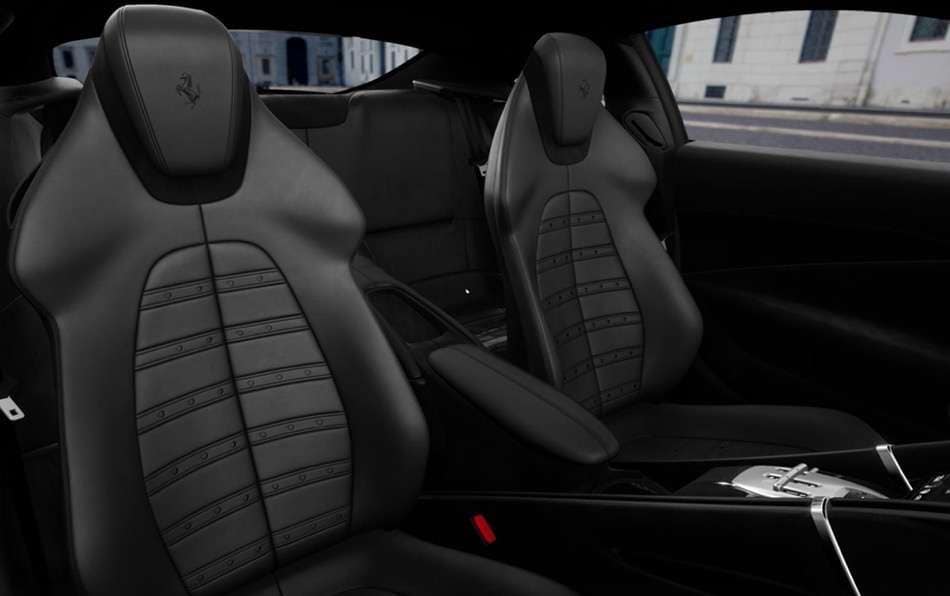
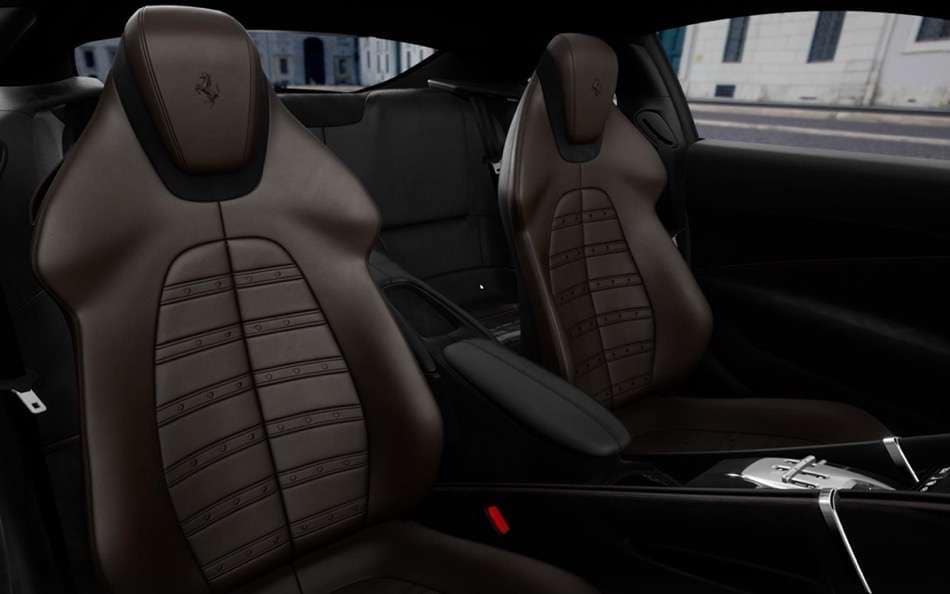
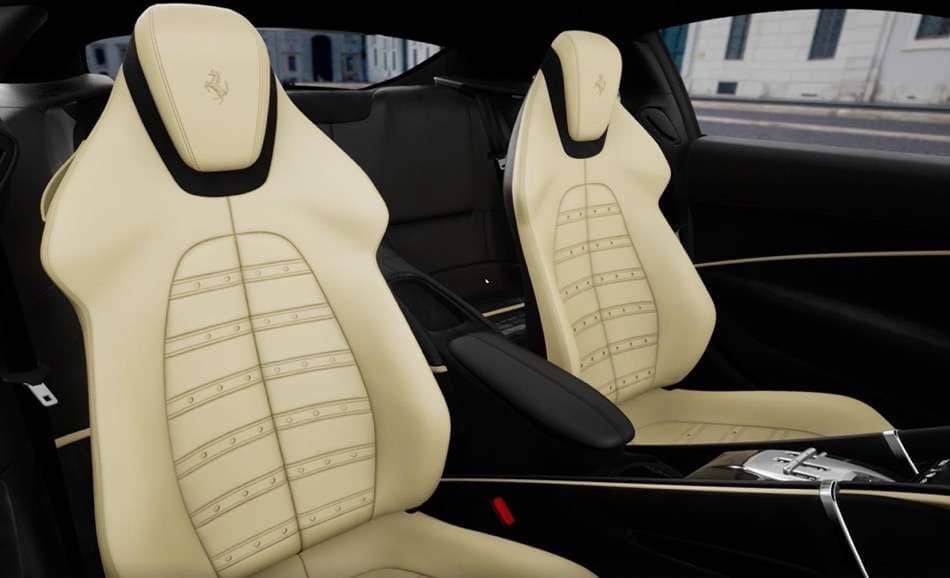
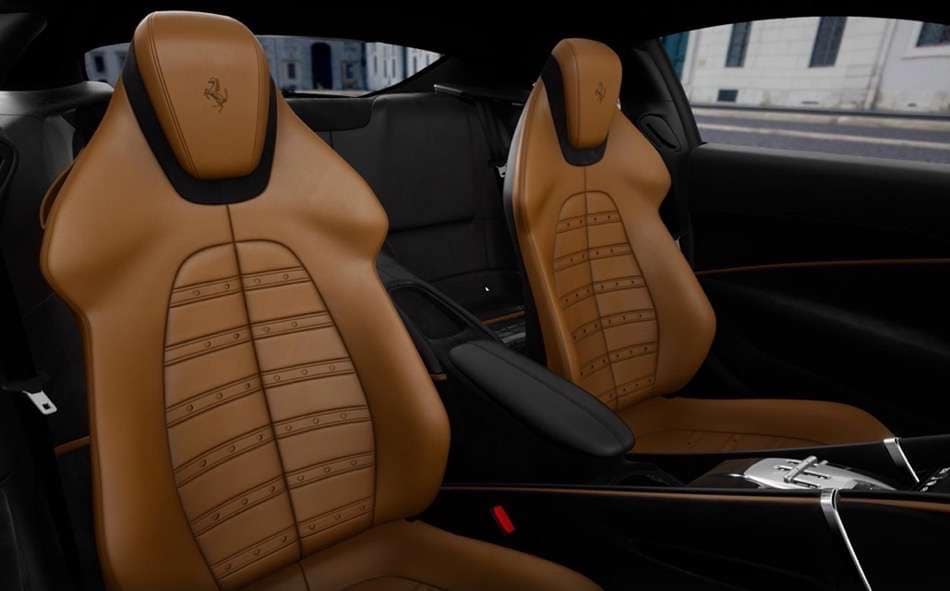
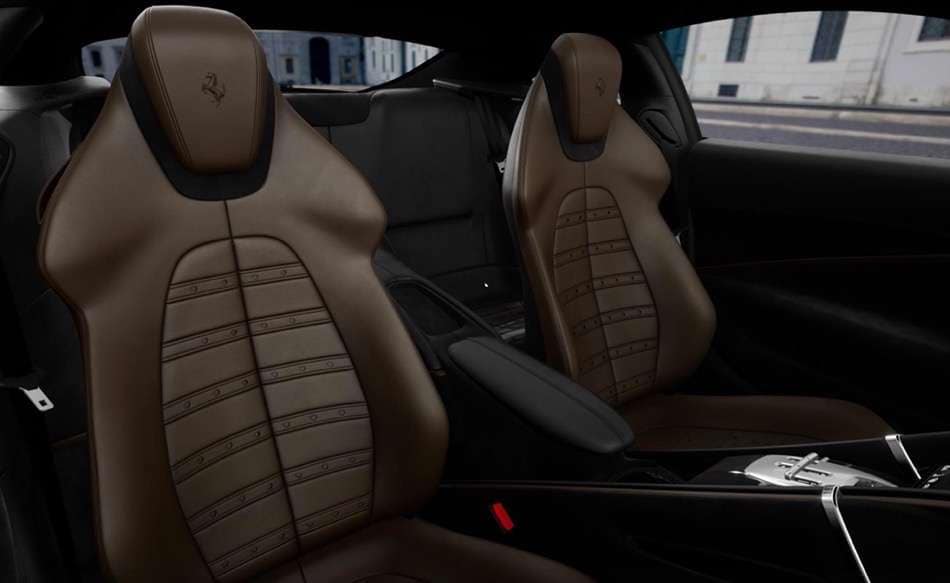
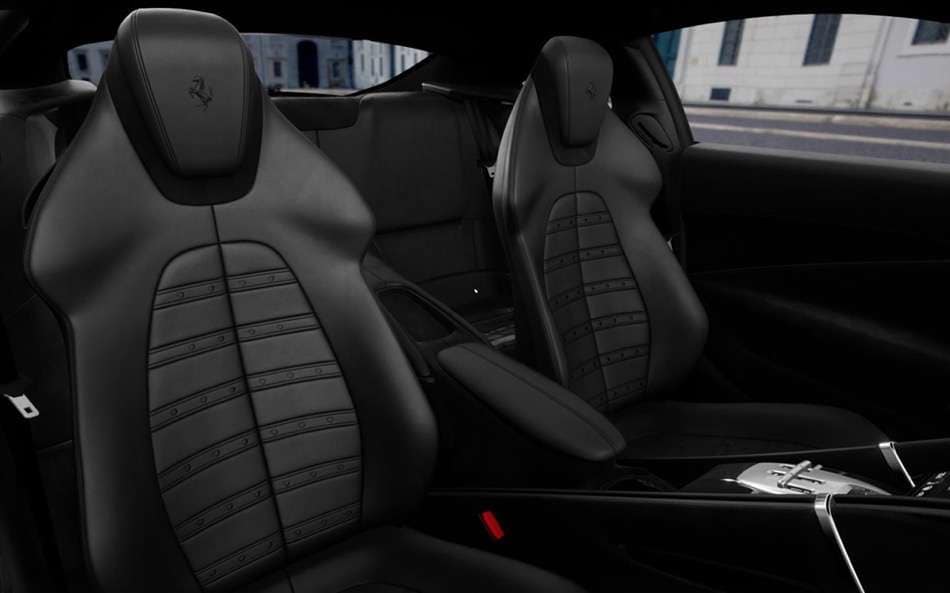
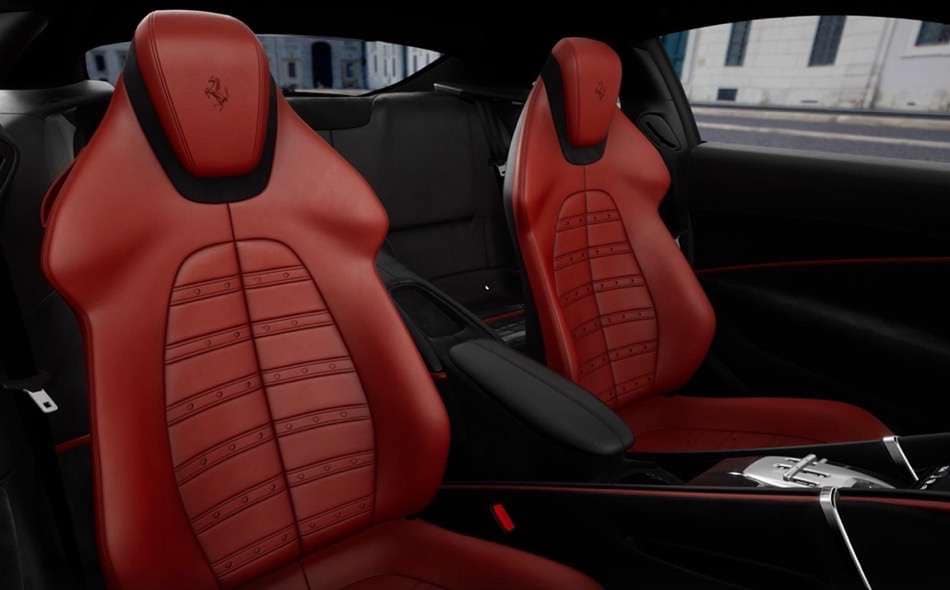
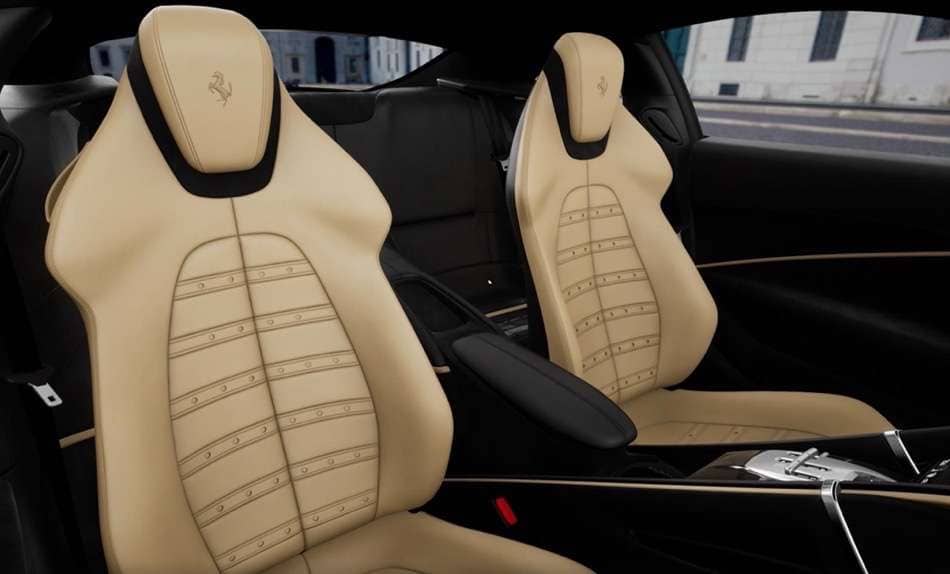
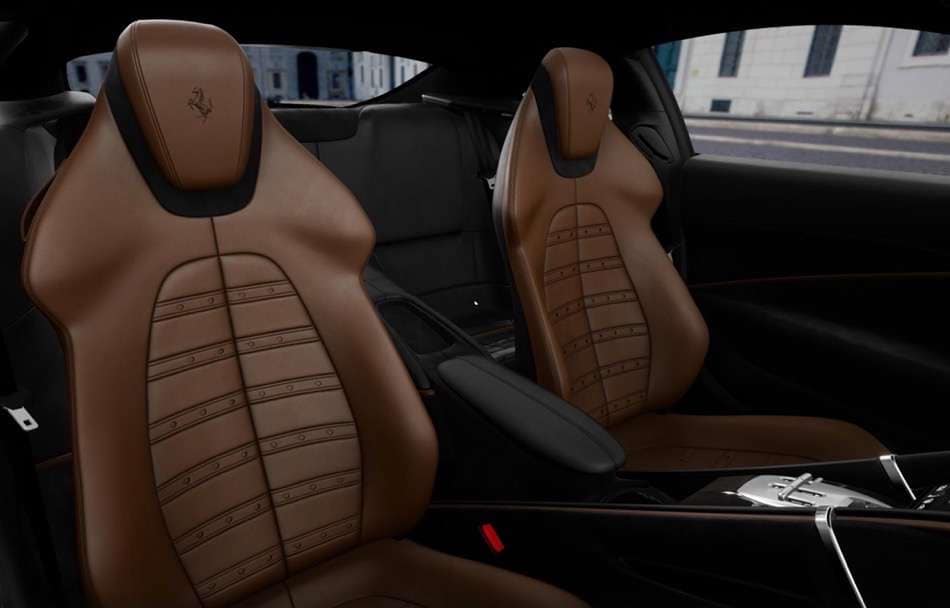
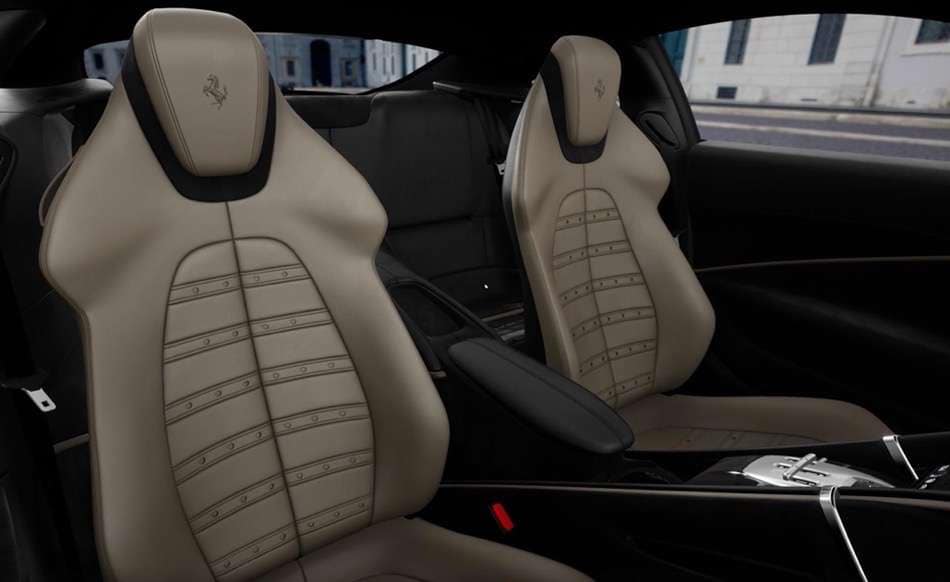
Ferrari Roma Interior Tradizione Inner Detail (Diamond Stitching Seats)
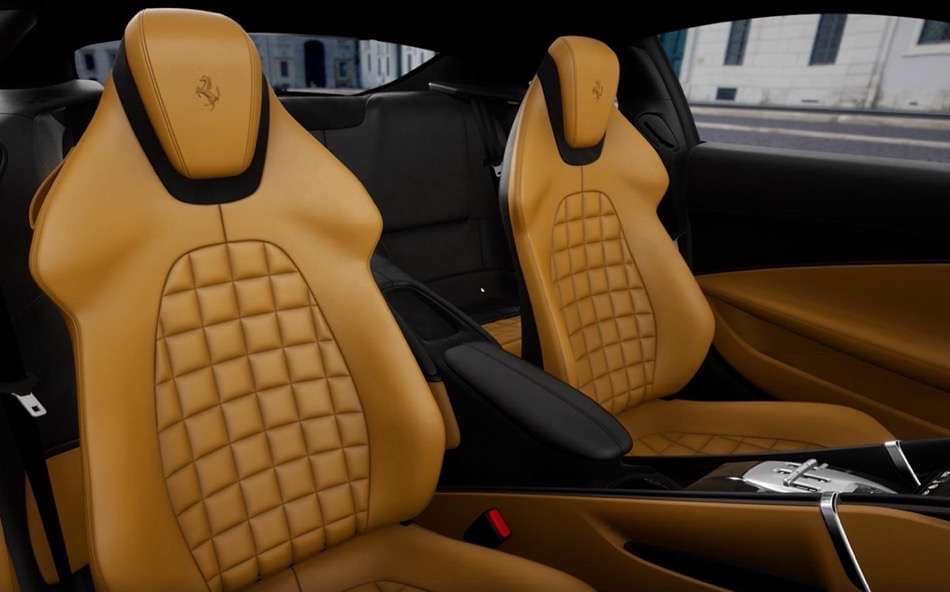
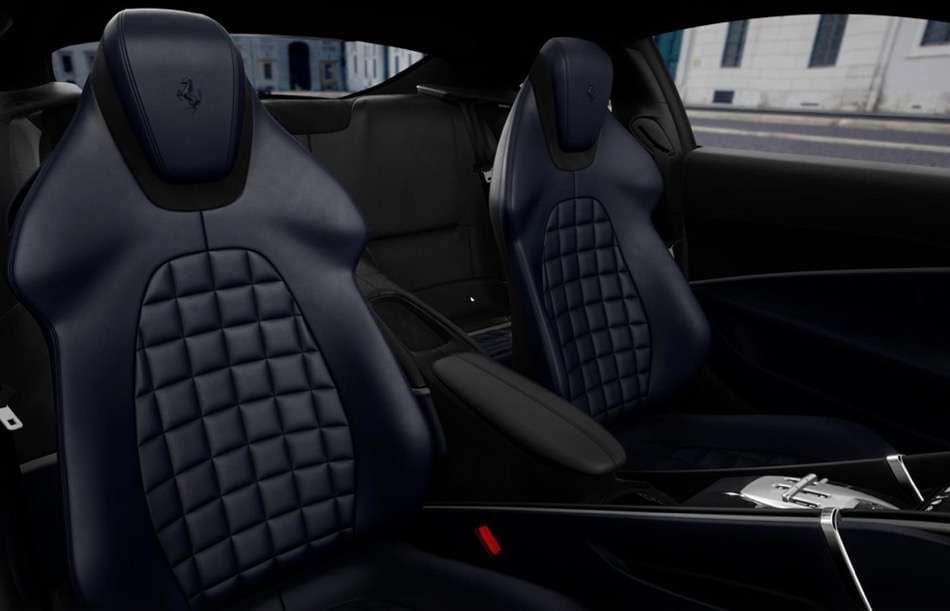
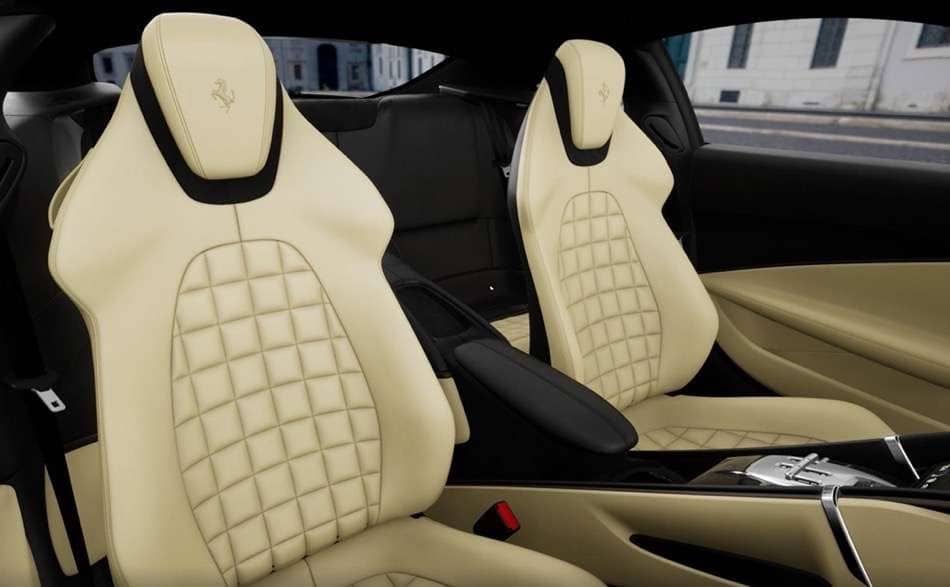
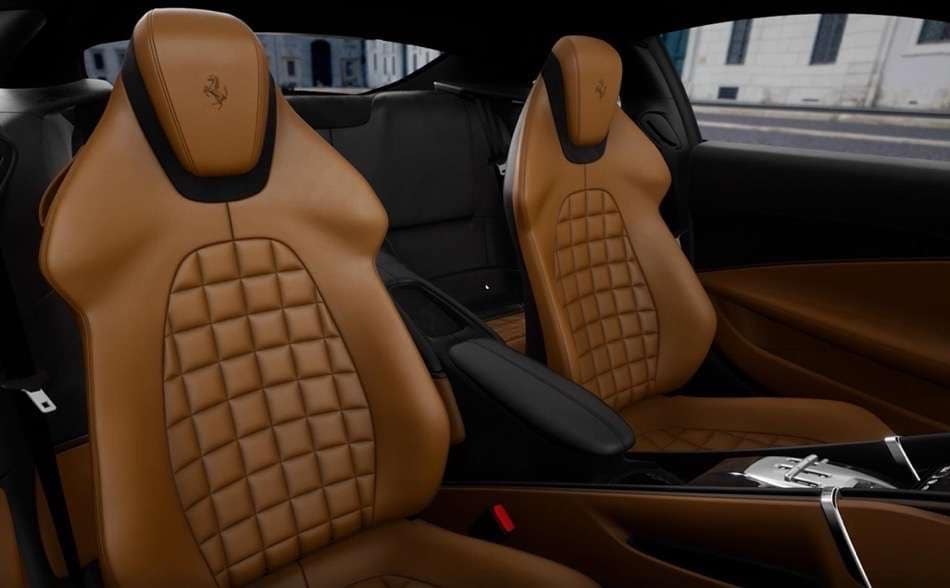
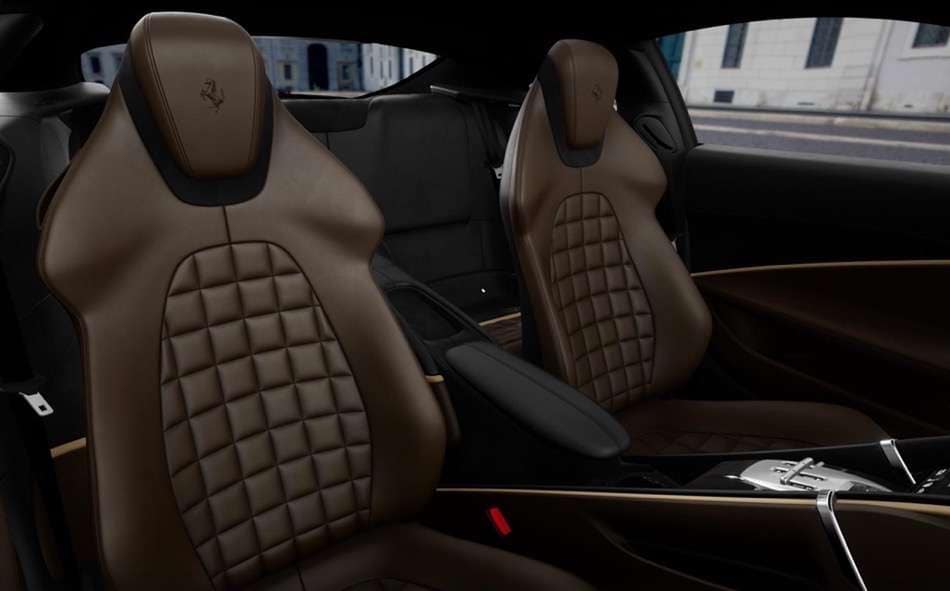
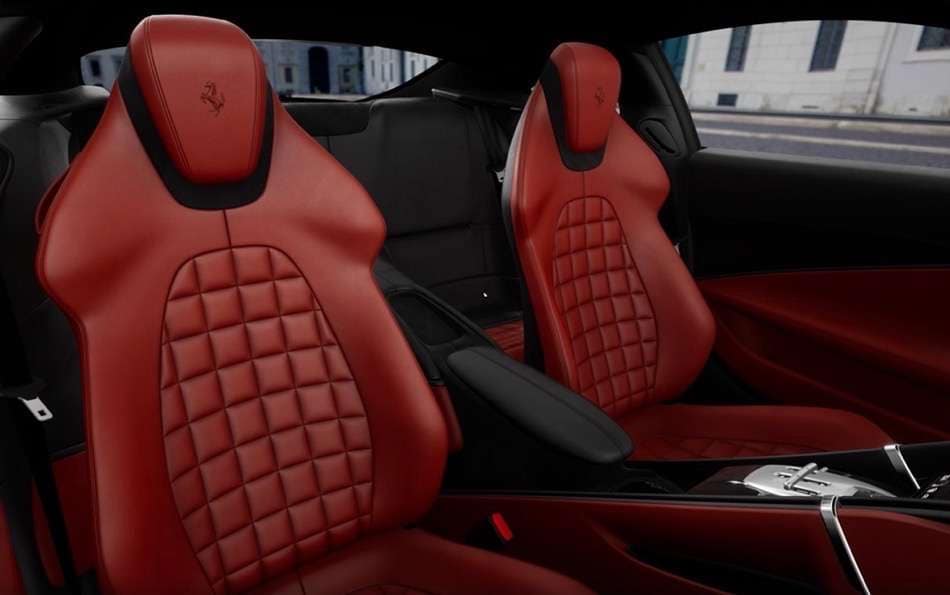
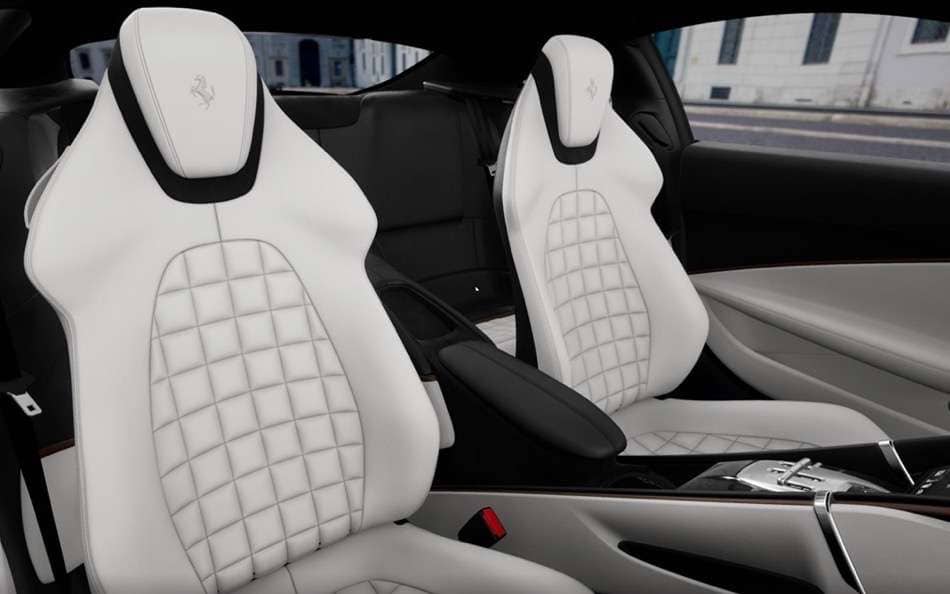
Ferrari Roma Interior Rosso & Giallo Modena Inner Detail (Standard Seats)
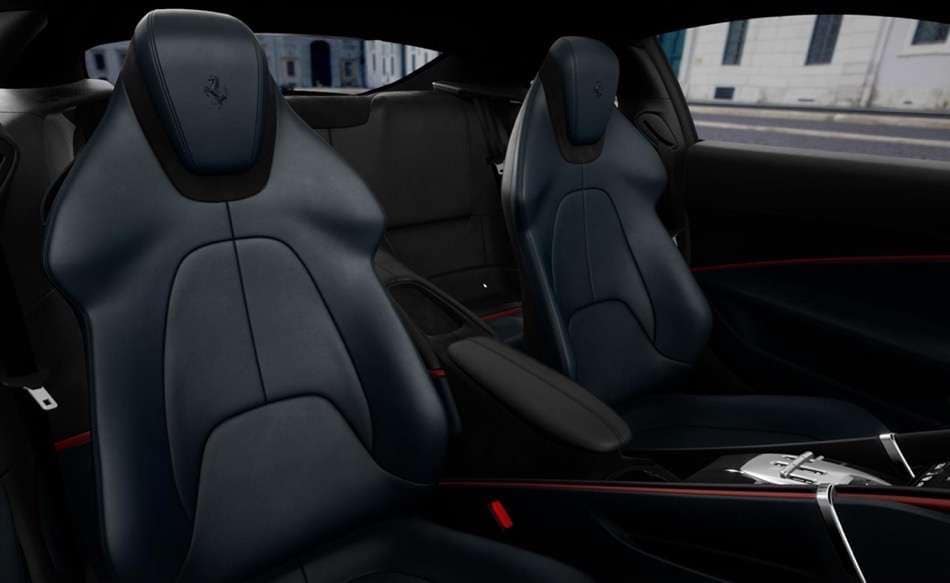
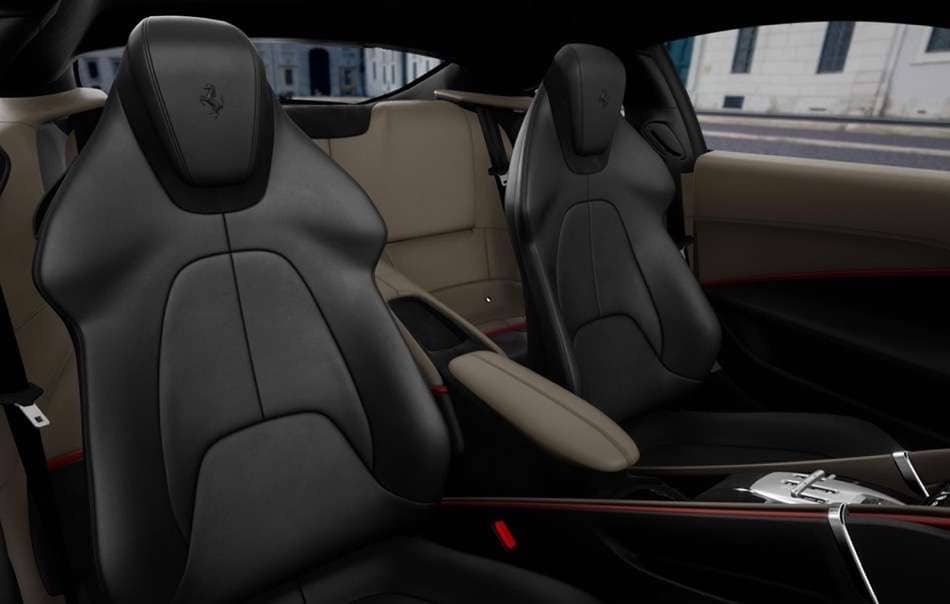
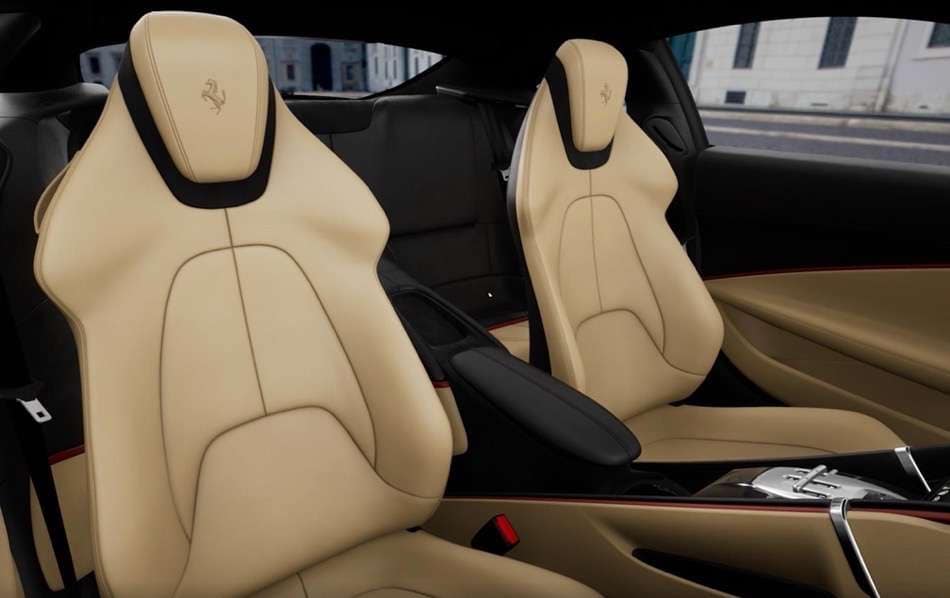
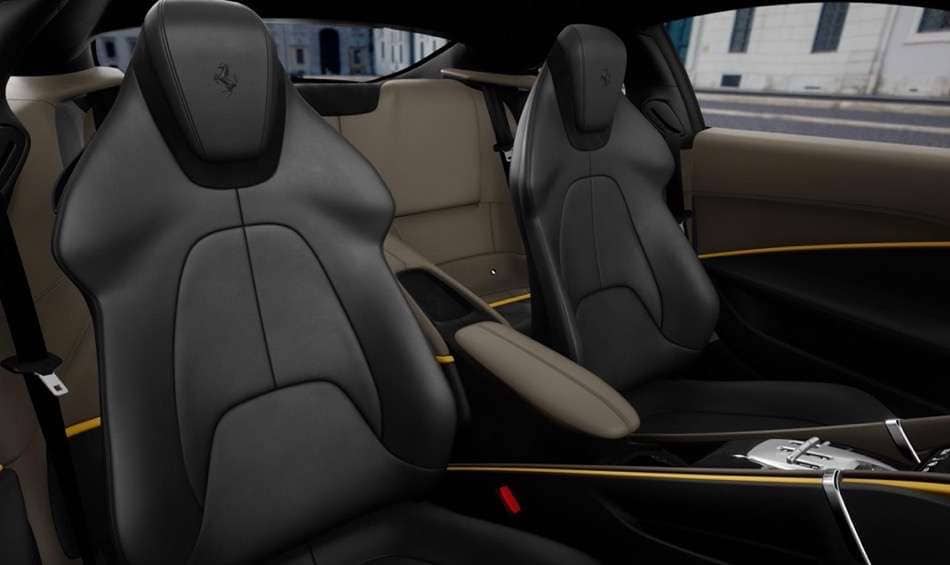
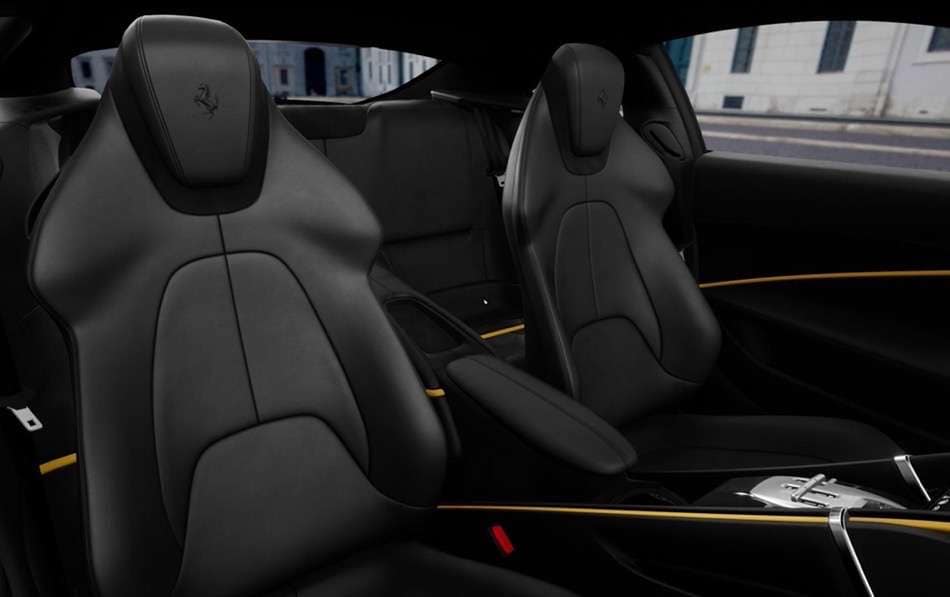
Ferrari Roma: Technical Specifications
| Ferrari Roma | Technical Specifications |
| ENGINE | |
| Type | V8 – 90° turbo |
| Overall displacement | 3855 cc |
| Bore and stroke | 86.5 mm x 82 mm |
| Max. power output* | 456 kW (620 cv) at 5750 – 7500 rpm |
| Max. torque | 760 Nm at 3000 – 5750 rpm |
| Max. engine speed | 7500 rpm |
| Compression ratio | 9.45:1 |
| DIMENSIONS AND WEIGHT | |
| Length | 4656 mm |
| Width | 1974 mm |
| Height | 1301 mm |
| Wheelbase | 2670 mm |
| Front track | 1652 mm |
| Rear track | 1679 mm |
| Kerb weight** | 1570 kg |
| Dry weight** | 1472 kg |
| Dry weight/power | 2.37 kg/cv |
| Boot capacity | 272 litres/ 345 litres |
| Fuel tank capacity | 80 L |
| TYRES AND WHEELS | |
| Front | 245/35 ZR20; 8J x 20” |
| Rear | 285/35 ZR20; 10J x 20” |
| BRAKES | |
| Front | 390 mm x 34 mm |
| Rear | 360 mm x 32 mm |
| TRANSMISSION AND GEARBOX | |
| Type | 8-speed F1 dual-clutch gearbox |
| Electronic controls | EPS, VDC, ABS with EBD, F1-TCS, E-Diff3, SSC 6.0, FDE, SCM-E Frs |
| PERFORMANCE | |
| 0-100 km/h | 3.4 s |
| 0-200 km/h | 9.3 s |
| Max. speed | > 320 km/h |
| FUEL CONSUMPTION AND CO2 EMISSIONS | |
| Fuel Consumption | |
| LOW: | 17,8 L/100 KM |
| MID: | 10,8 L/100 KM |
| HIGH: | 9,7 L/100 KM |
| EXTRA HIGH: | 10,3 L/100 KM |
| COMBINED: | 11,2 L/100 KM |
| CO2 Emissions | |
| LOW: | 404 G/KM |
| MID: | 246 G/KM |
| HIGH: | 220 G/KM |
| EXTRA HIGH: | 235 G/KM |
| COMBINED: | 255 G/KM |
Other Questions about the Ferrari Roma
Will the Ferrari Roma be available as a convertible?
The Ferrari Roma is only available as a coupe and currently are no plans to offer a convertible version. The main reason for this is because Ferrari also makes the Ferrari Portofino M which is comparable and a Convertible.

